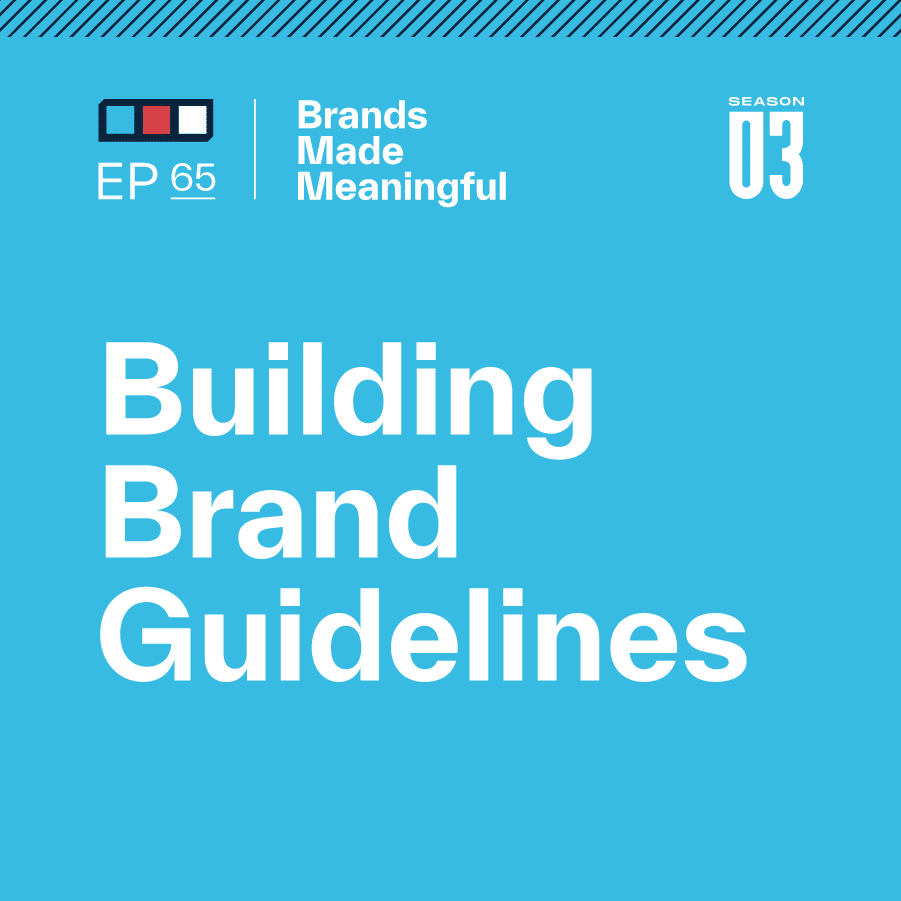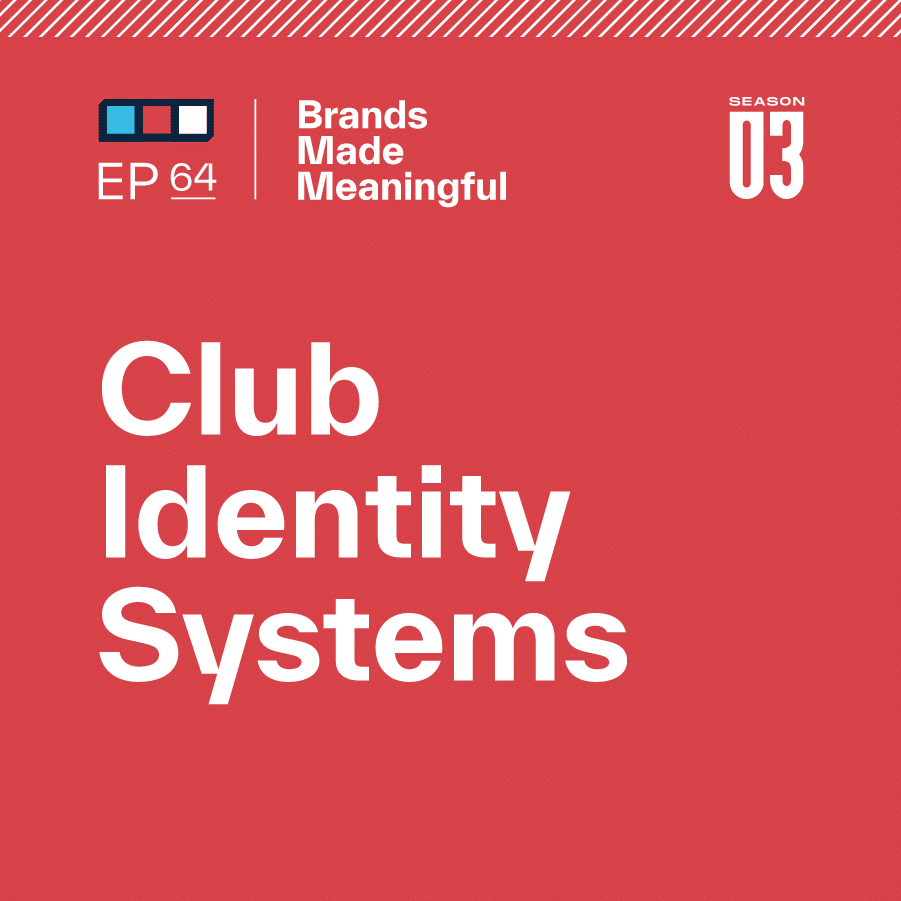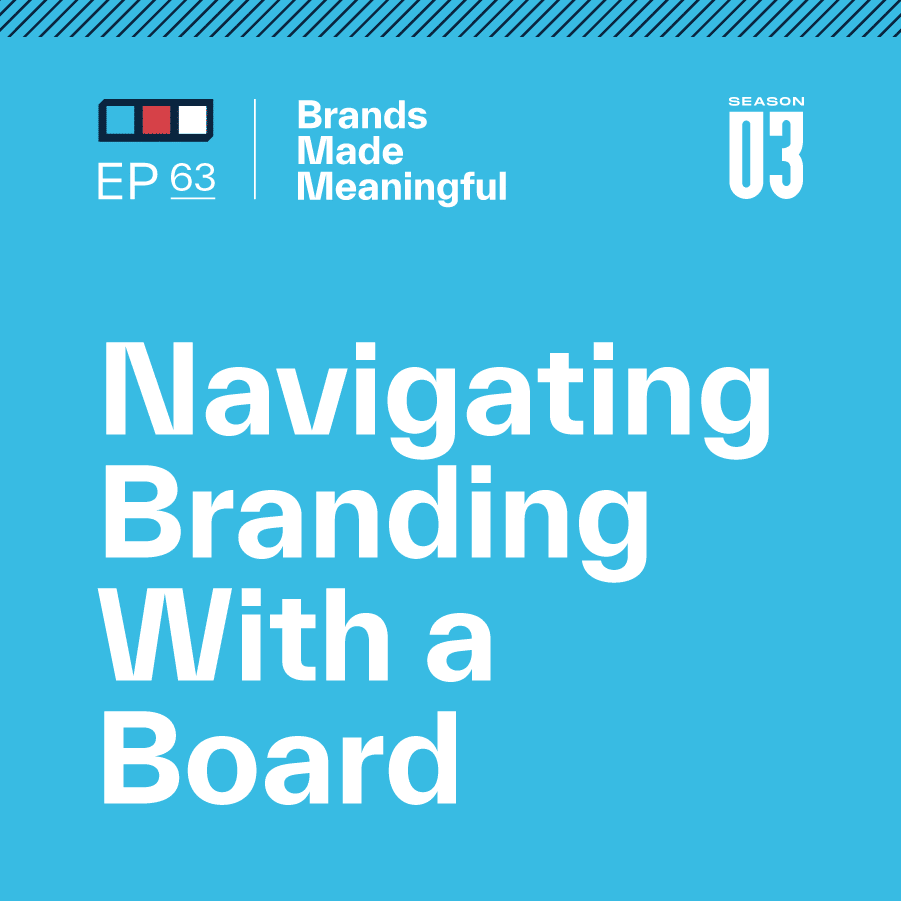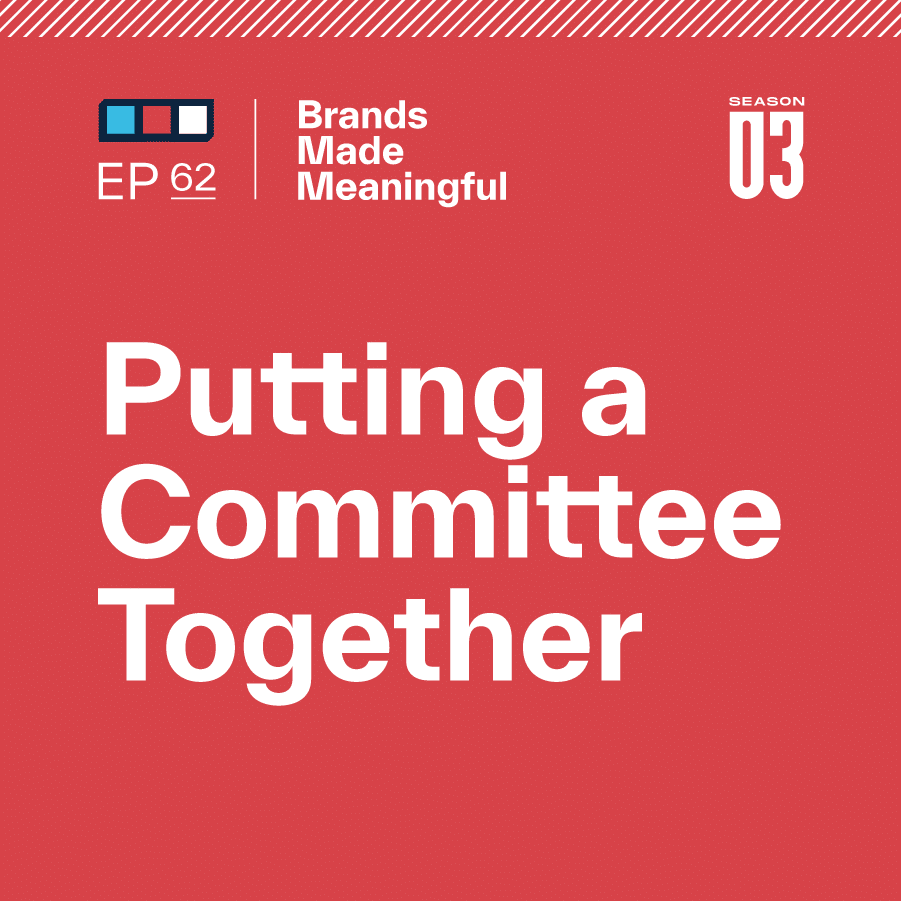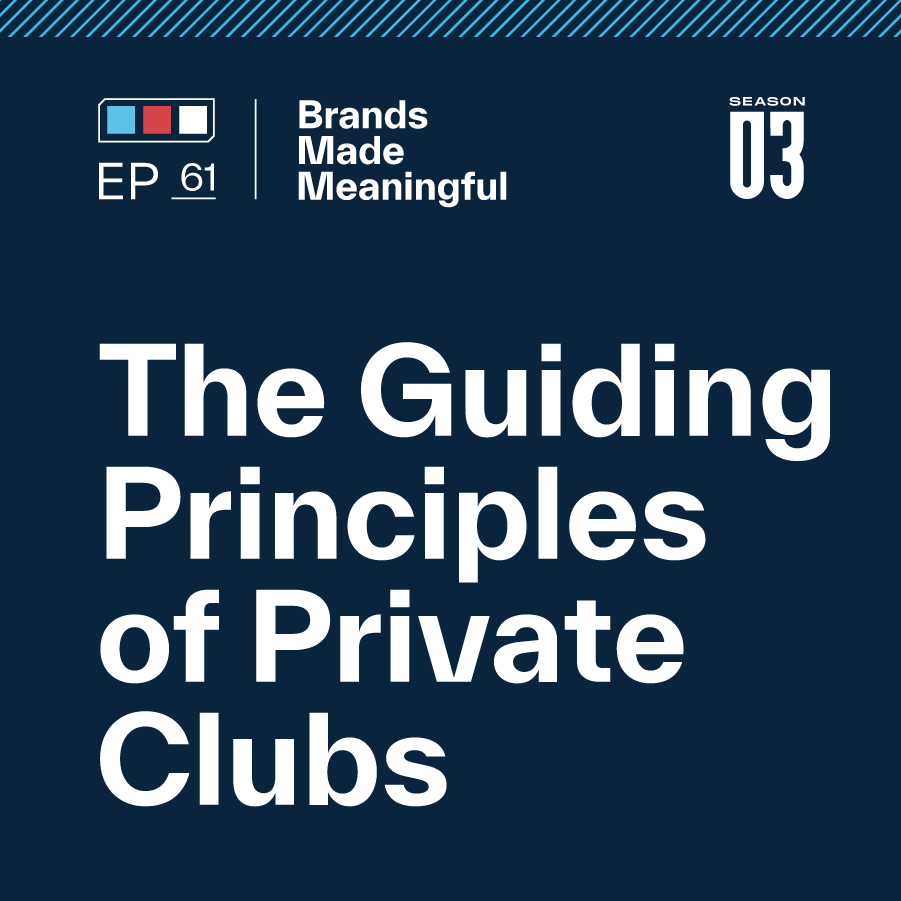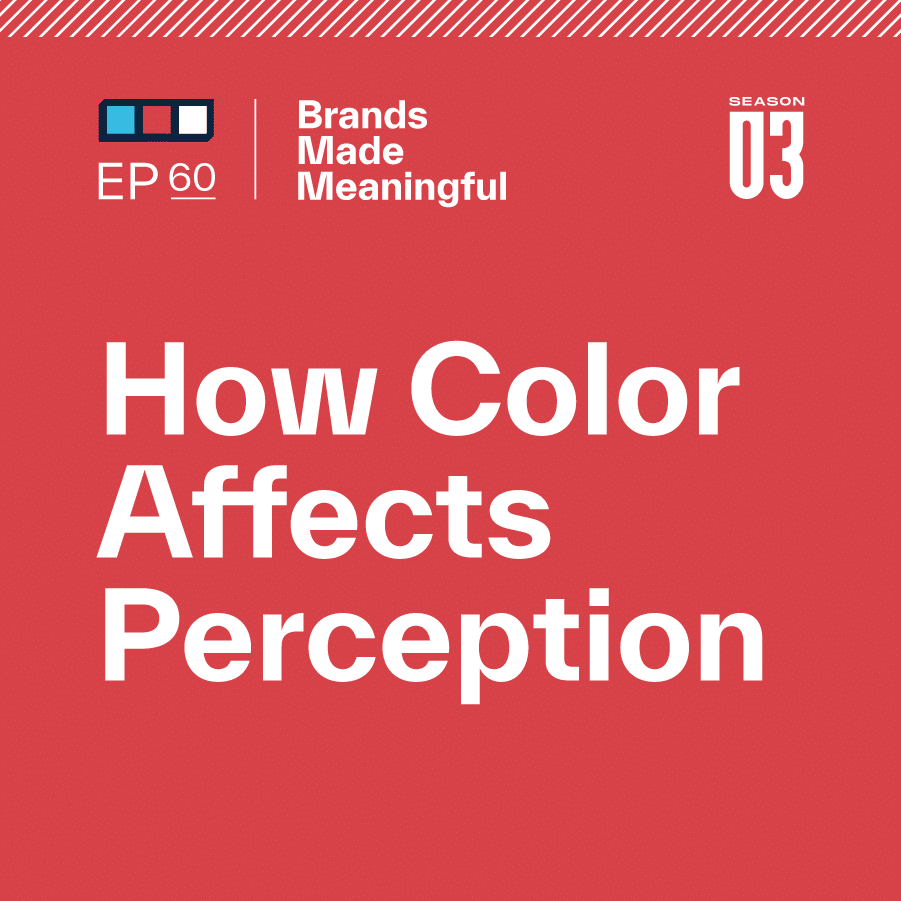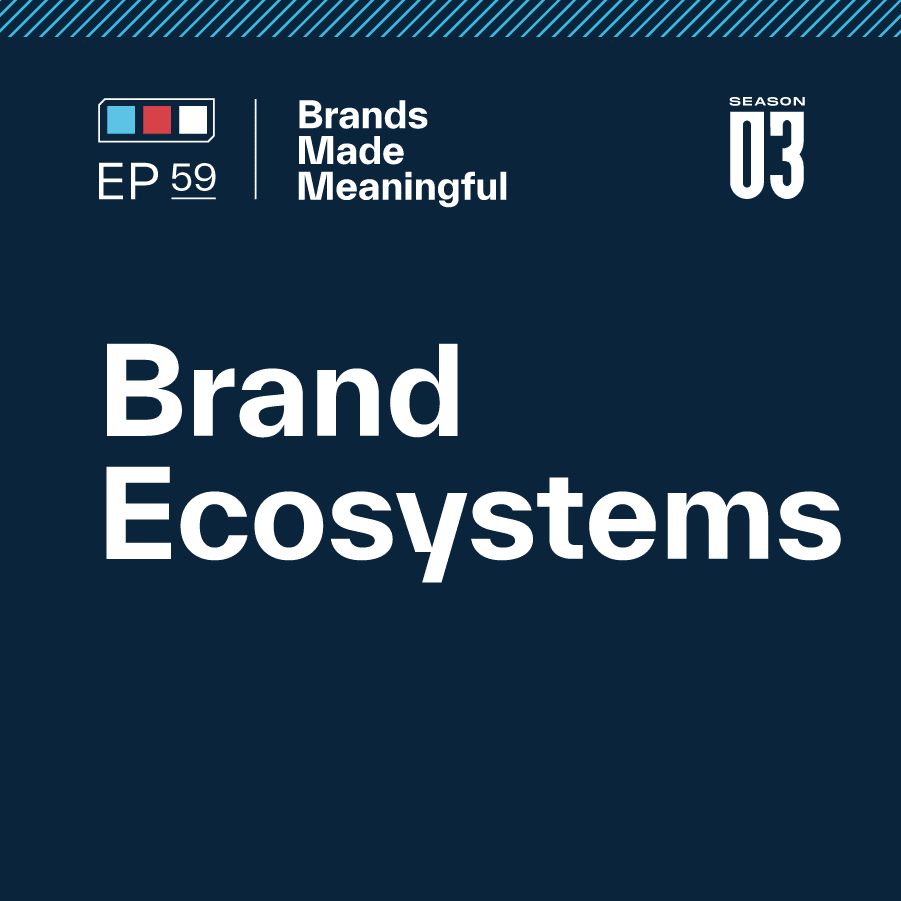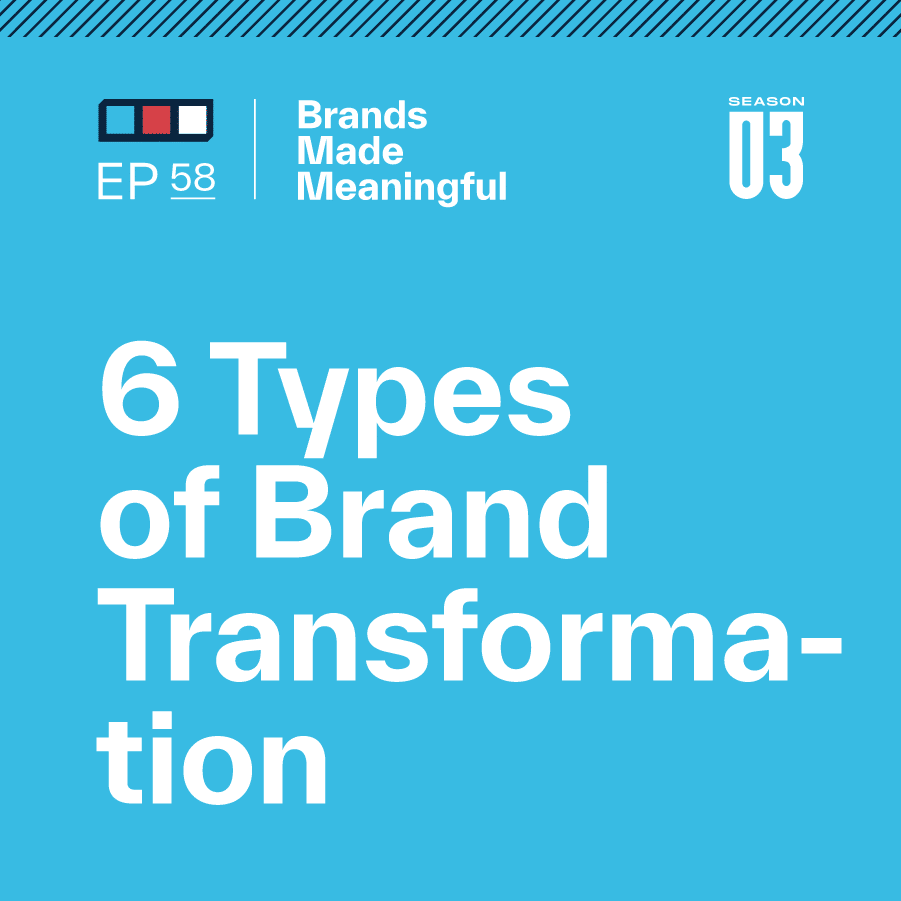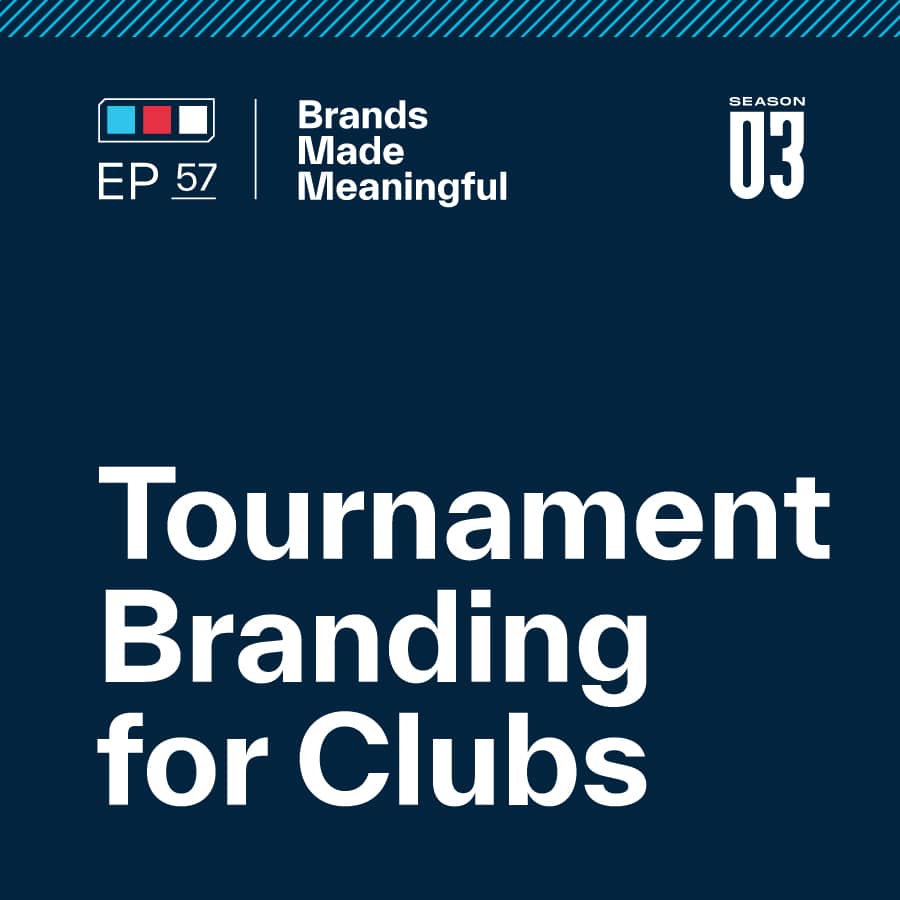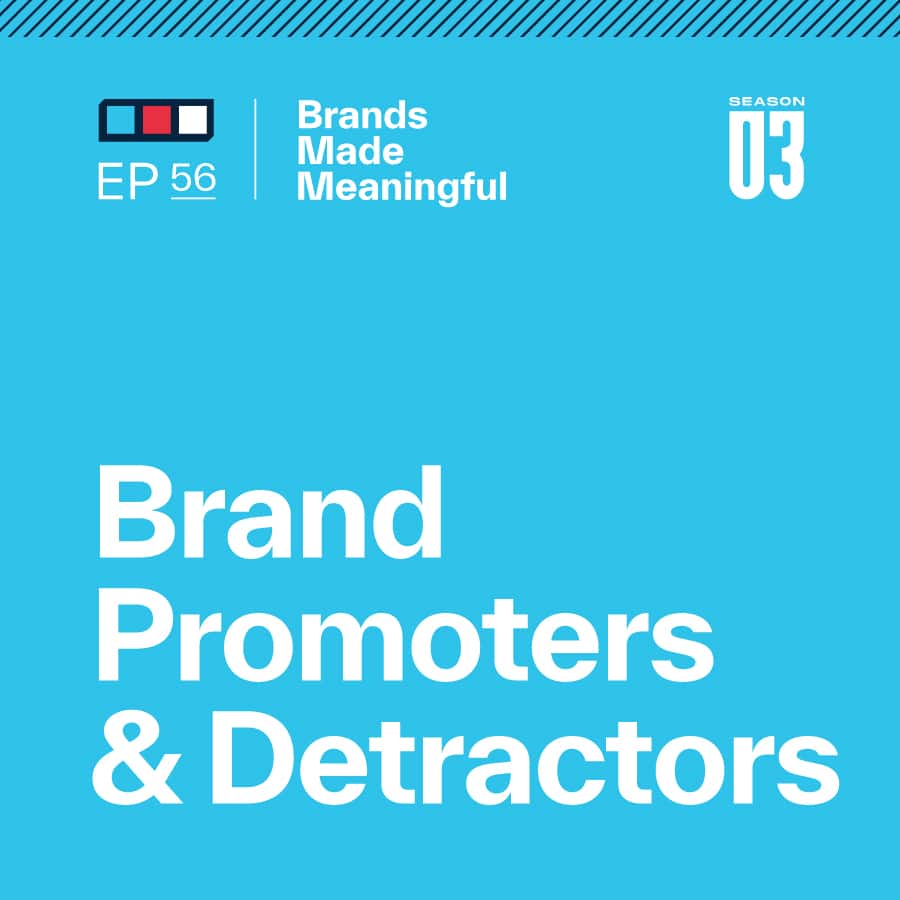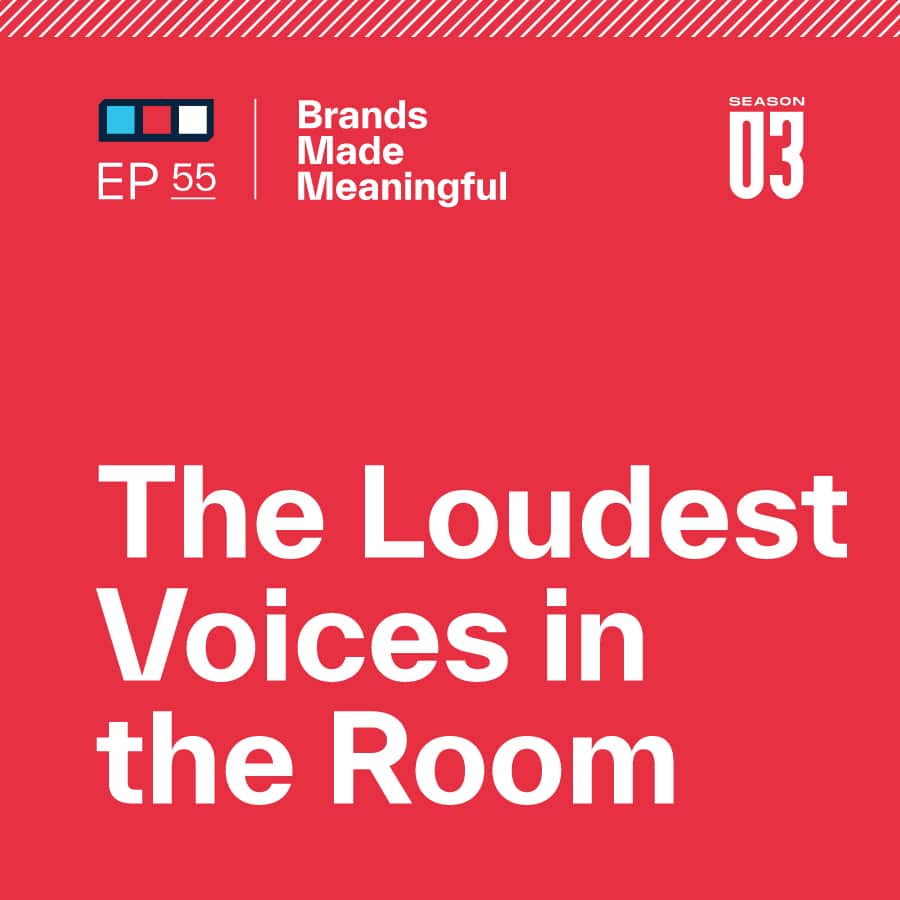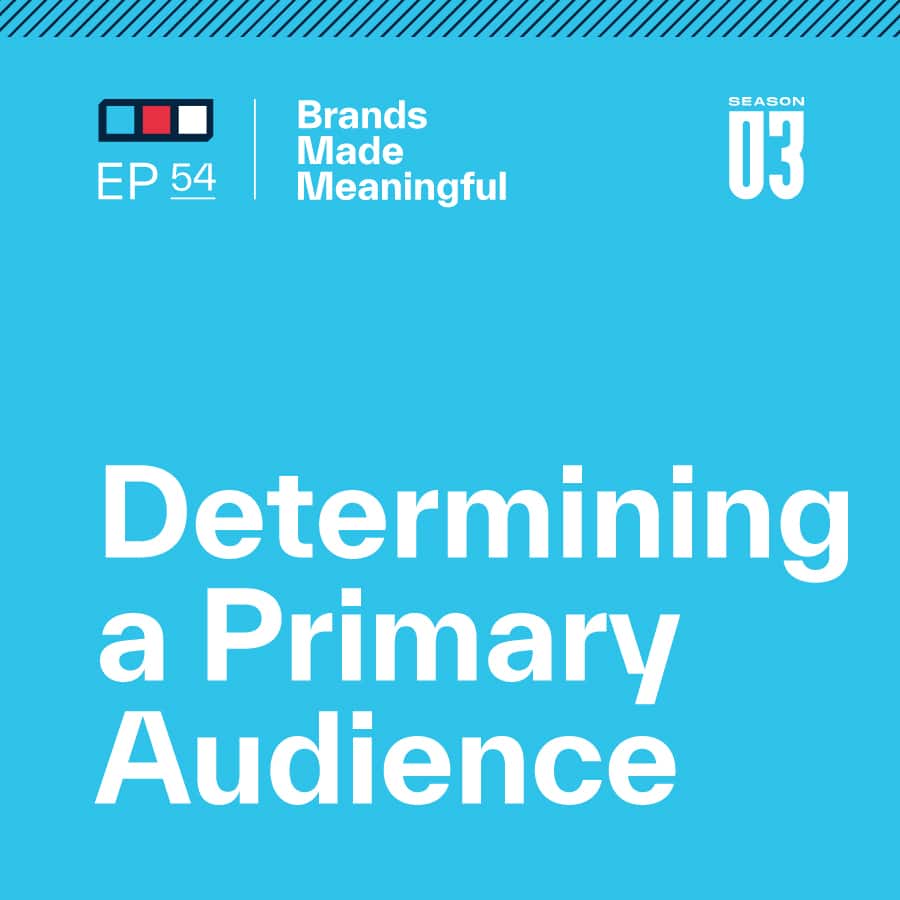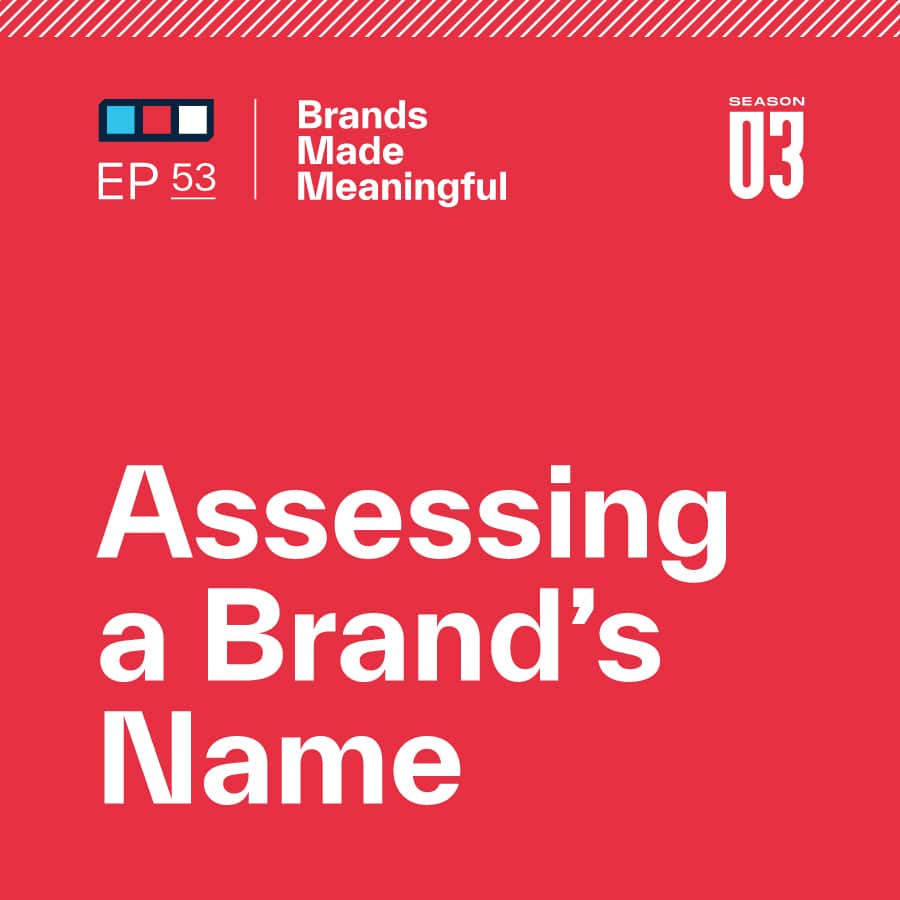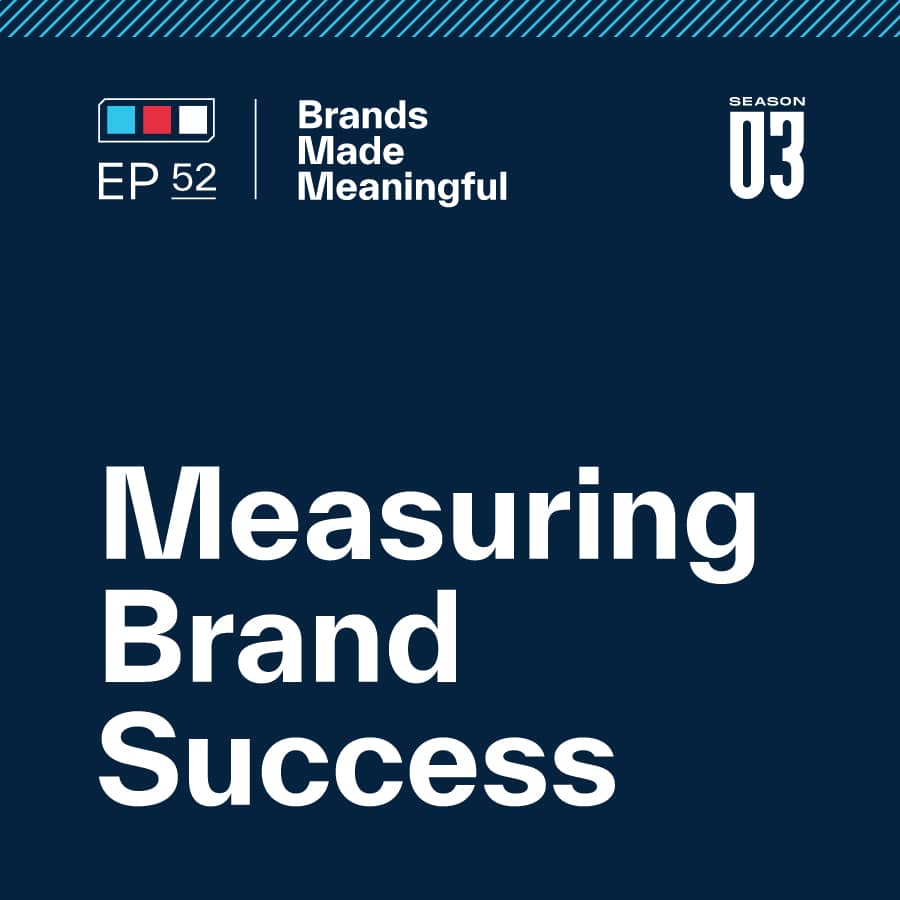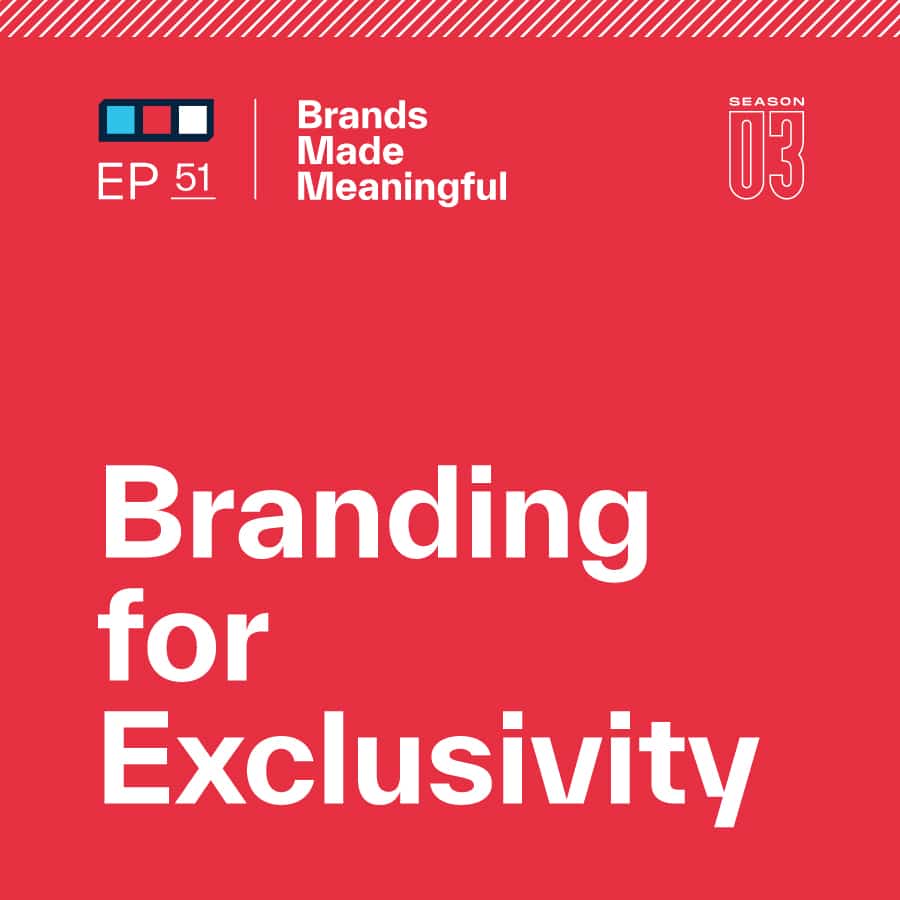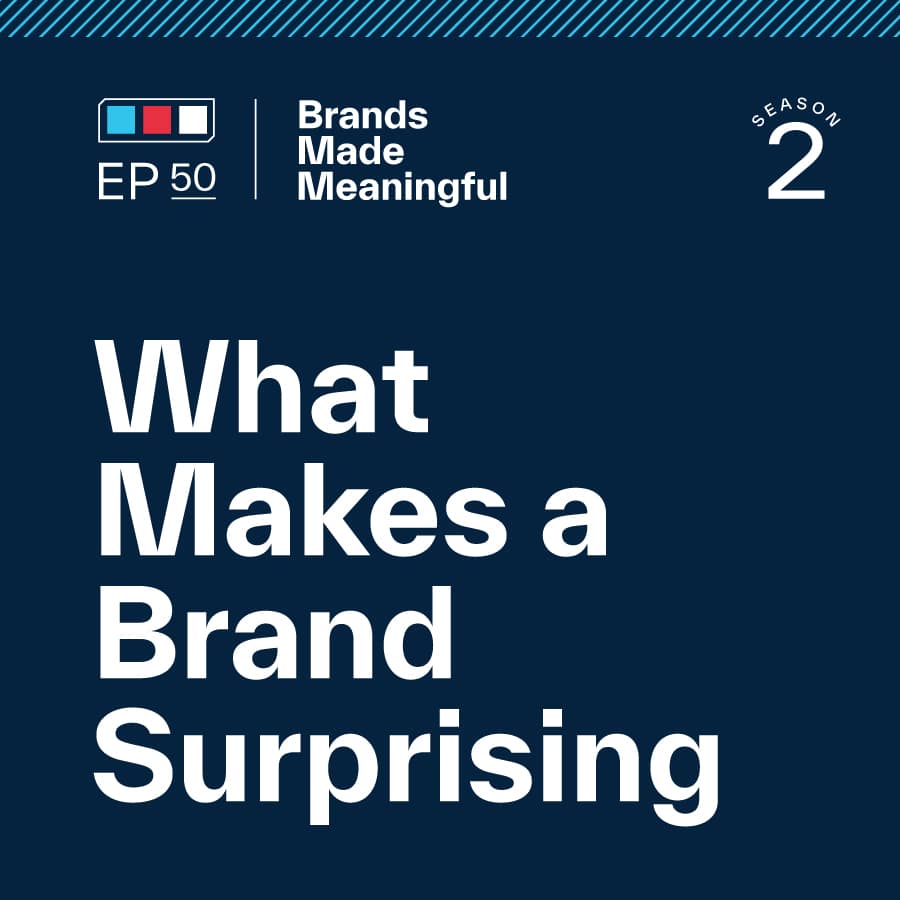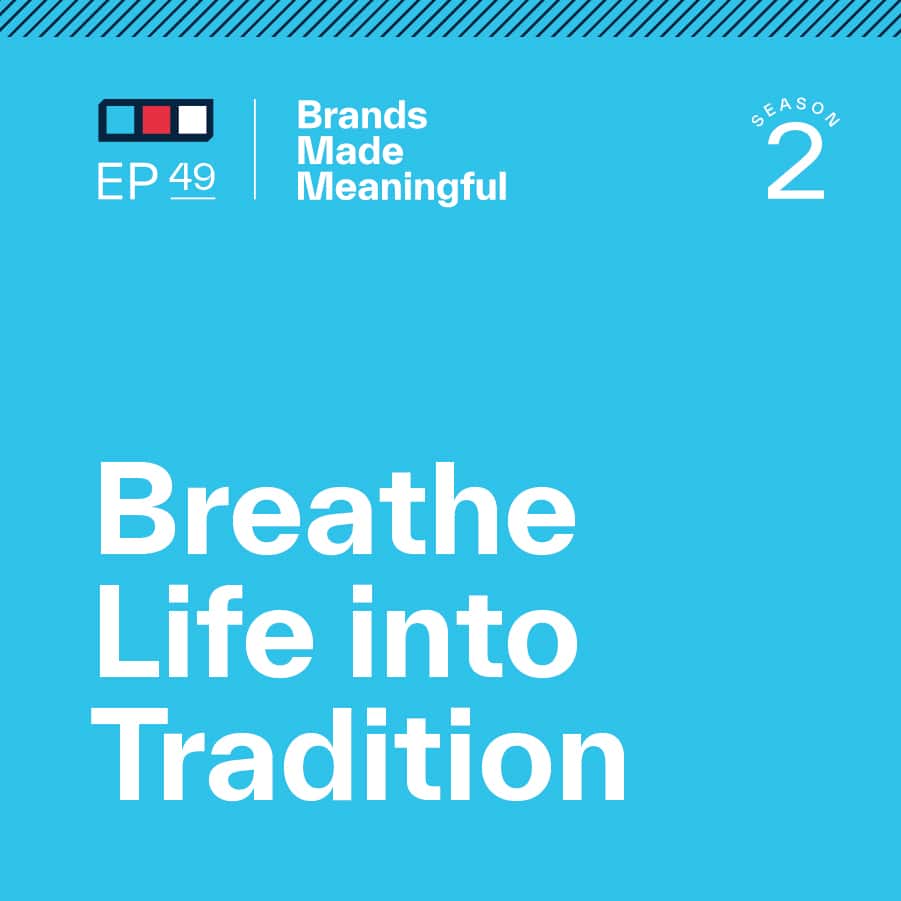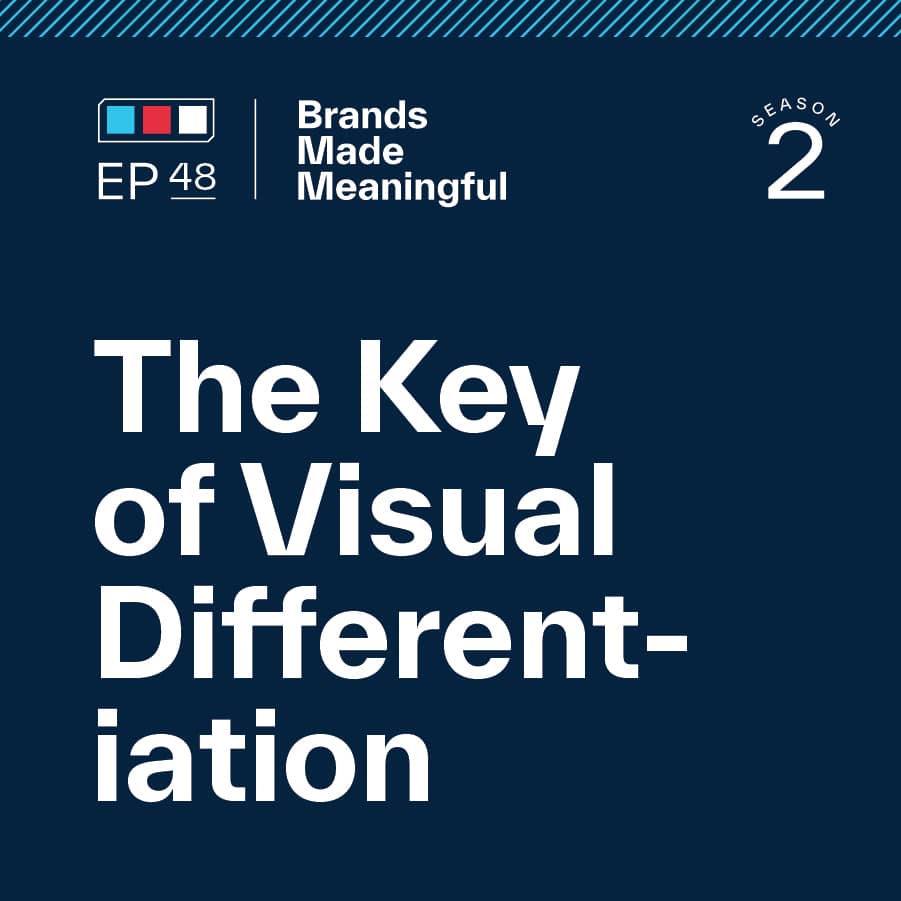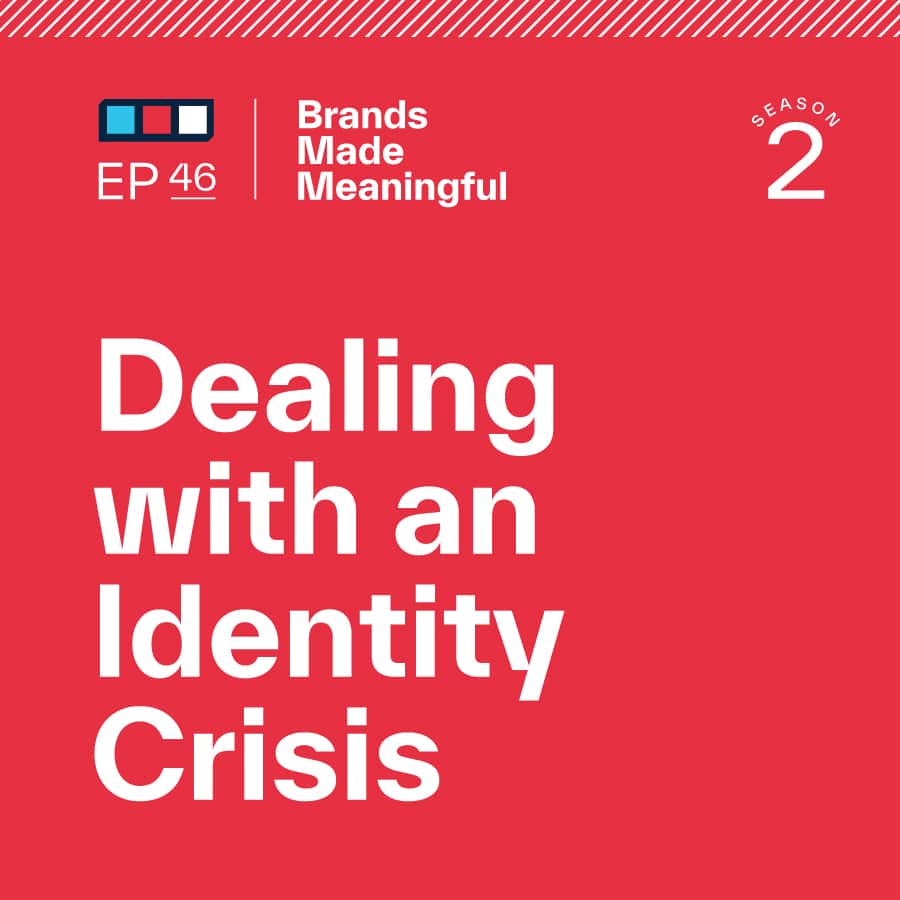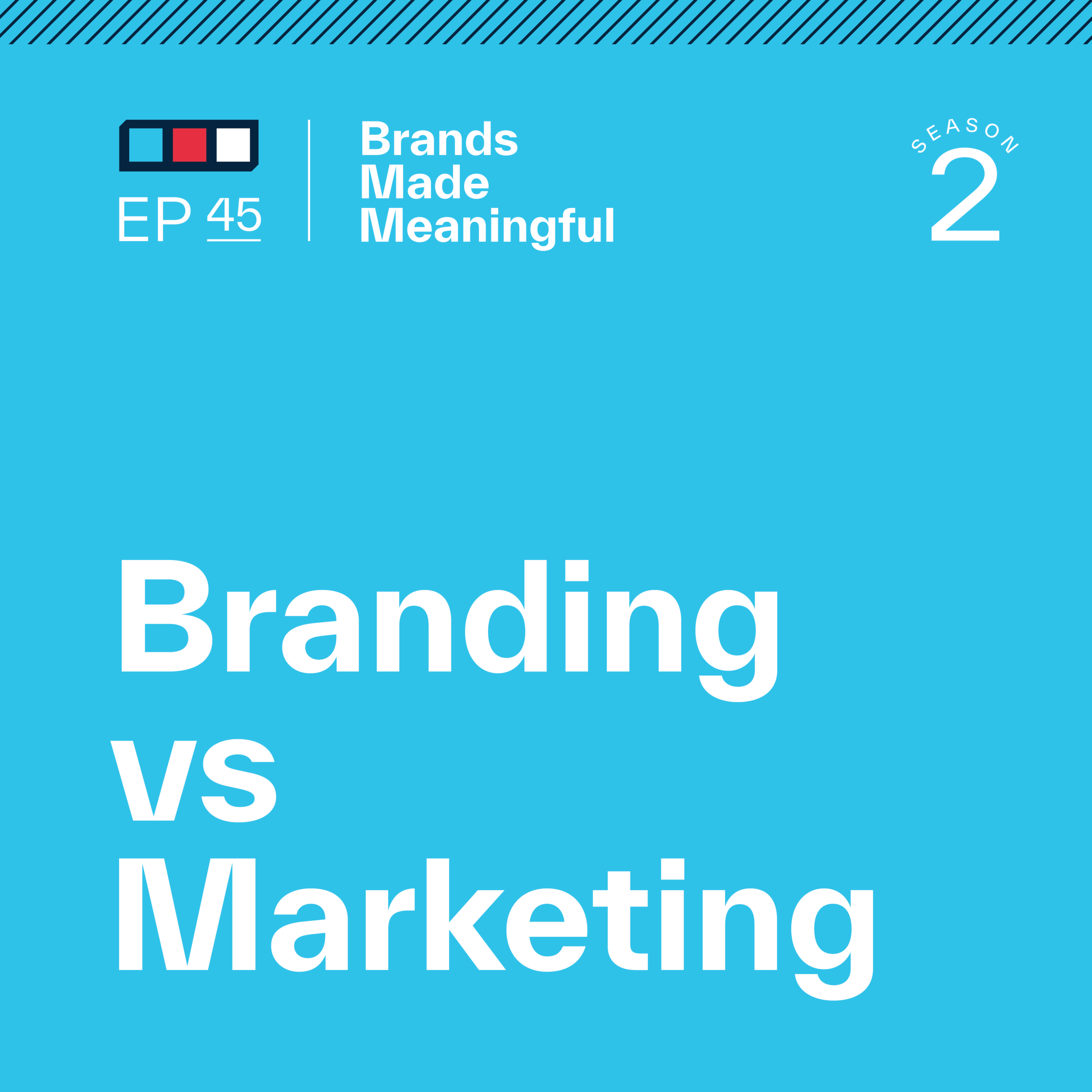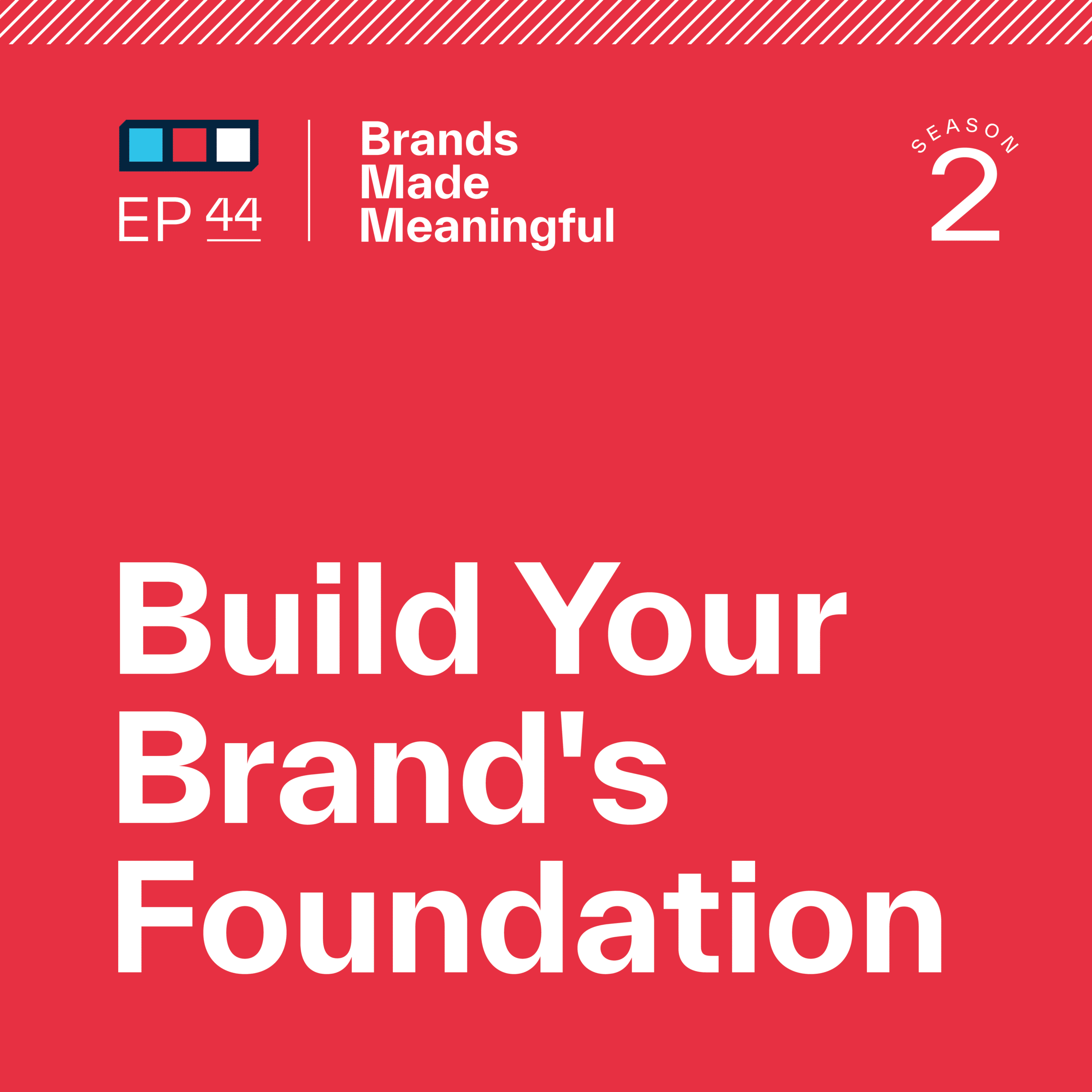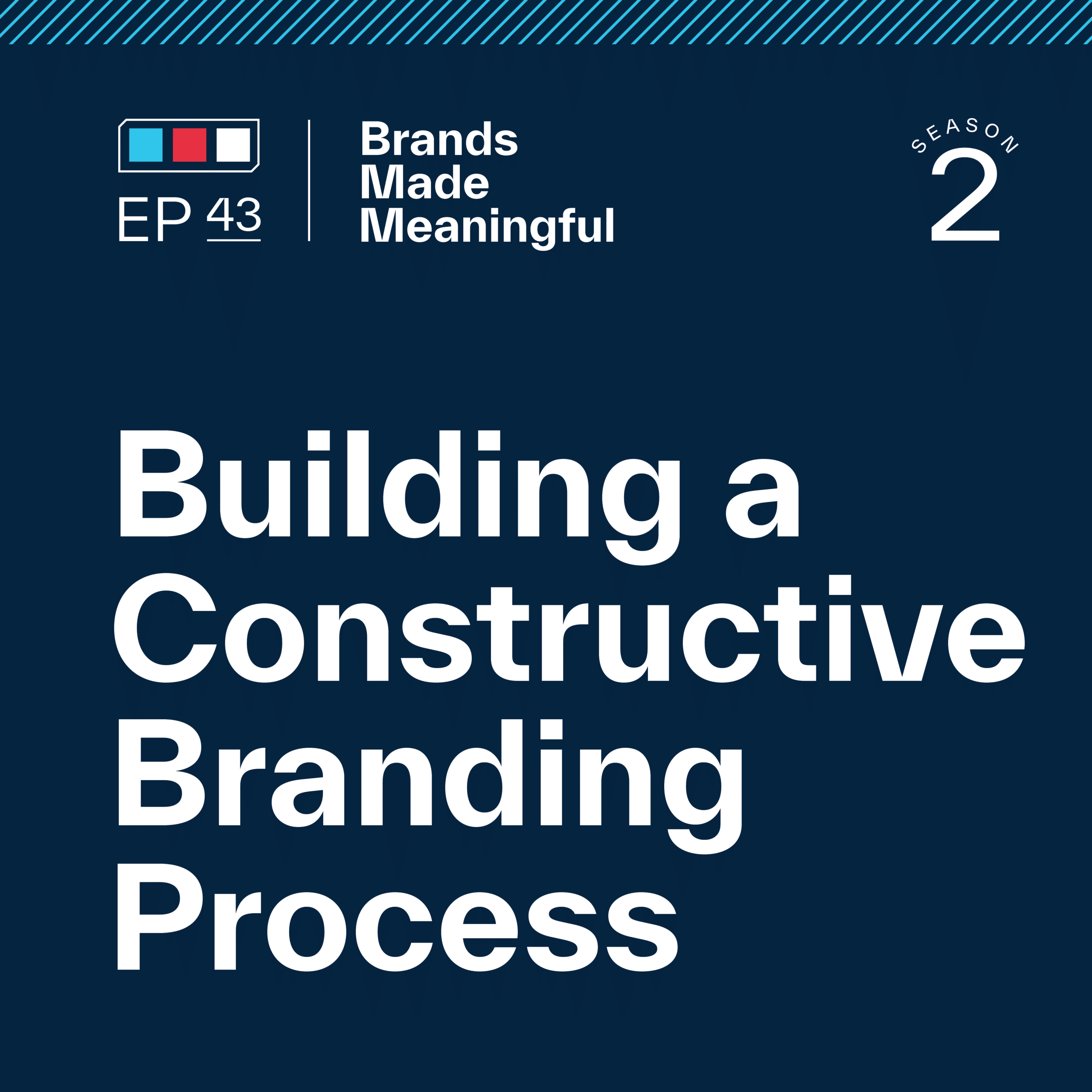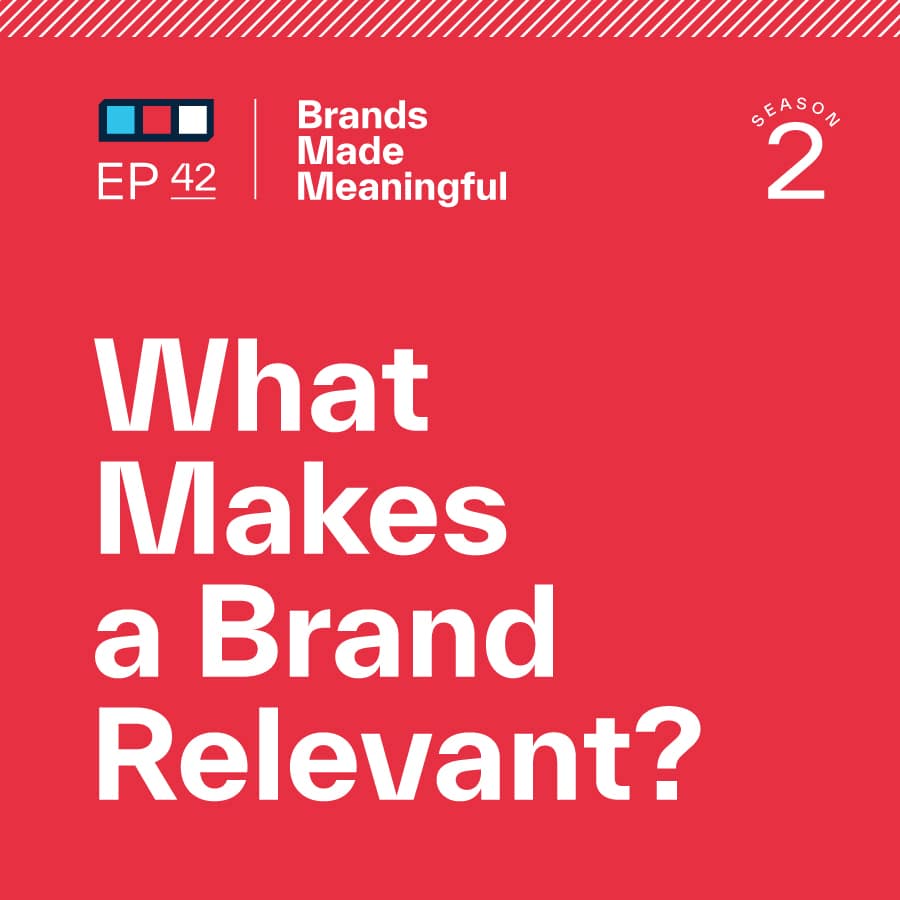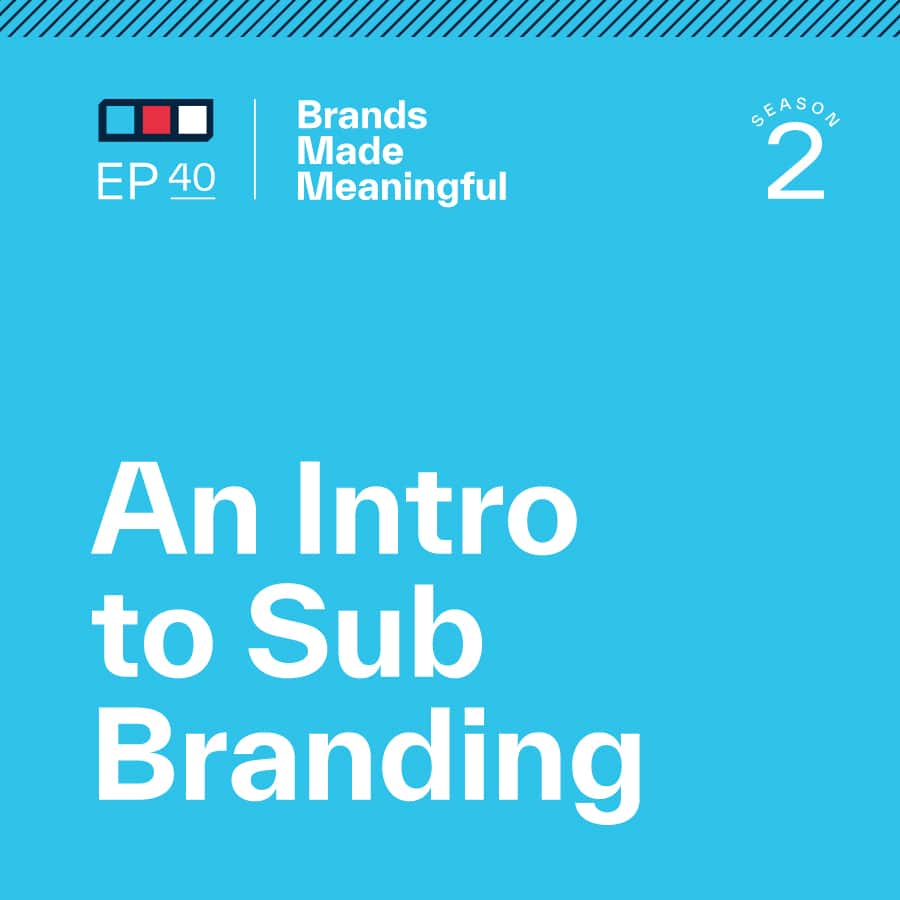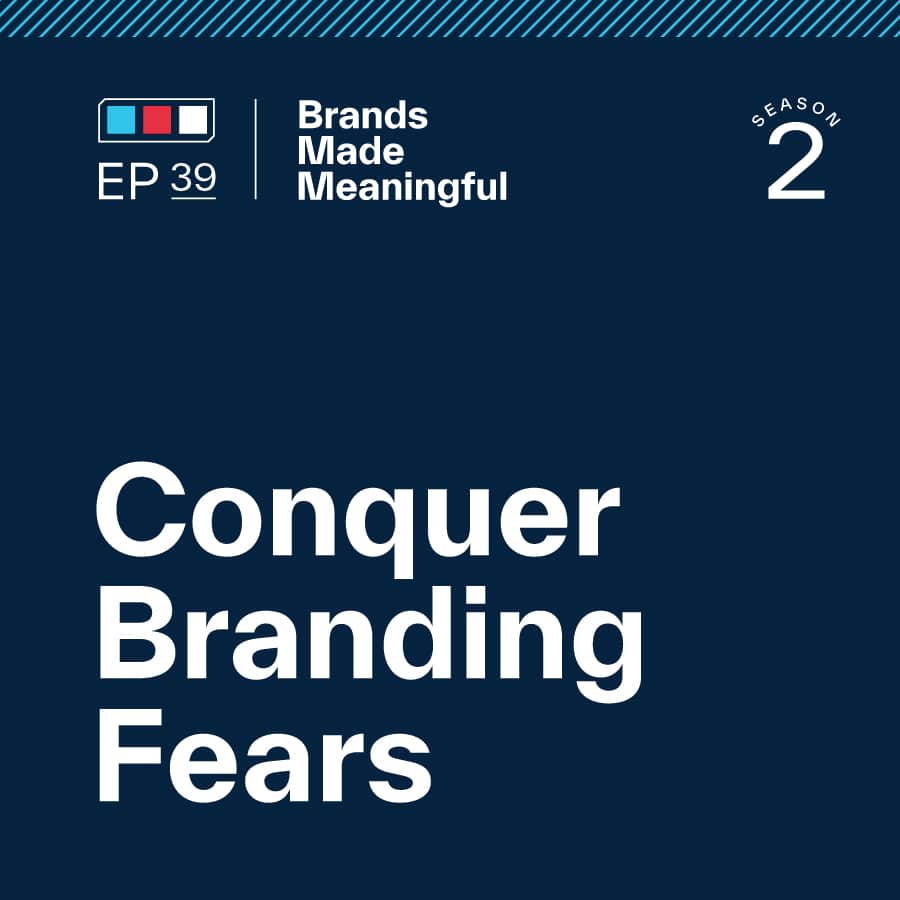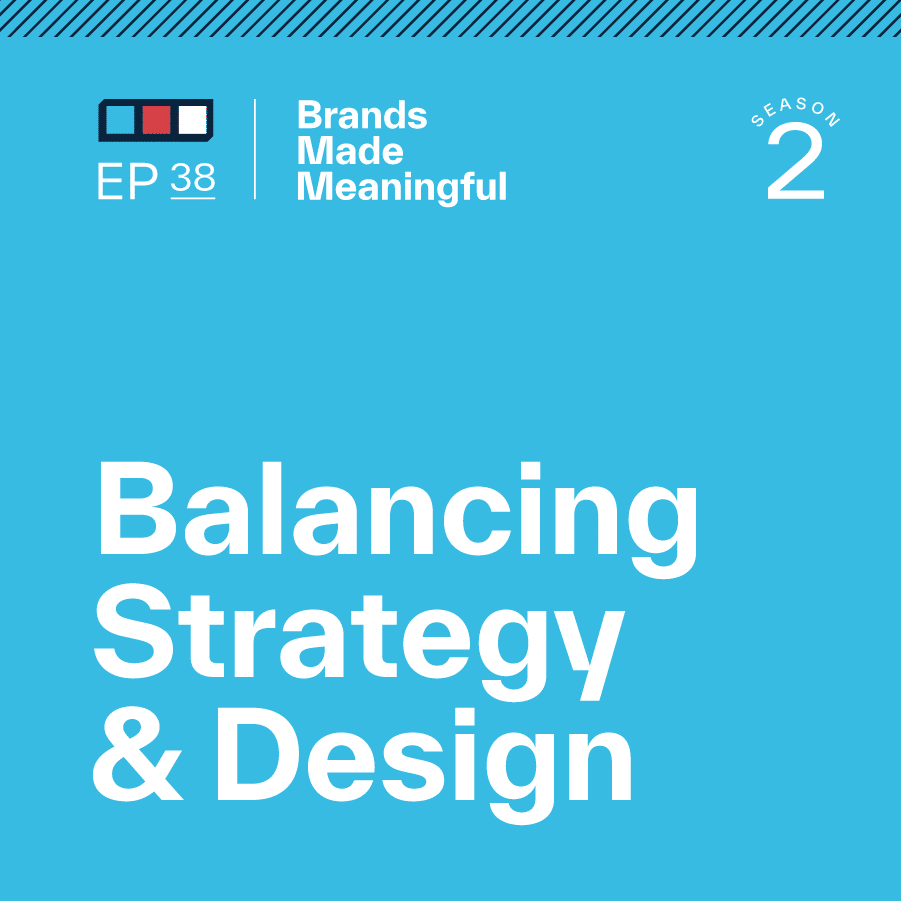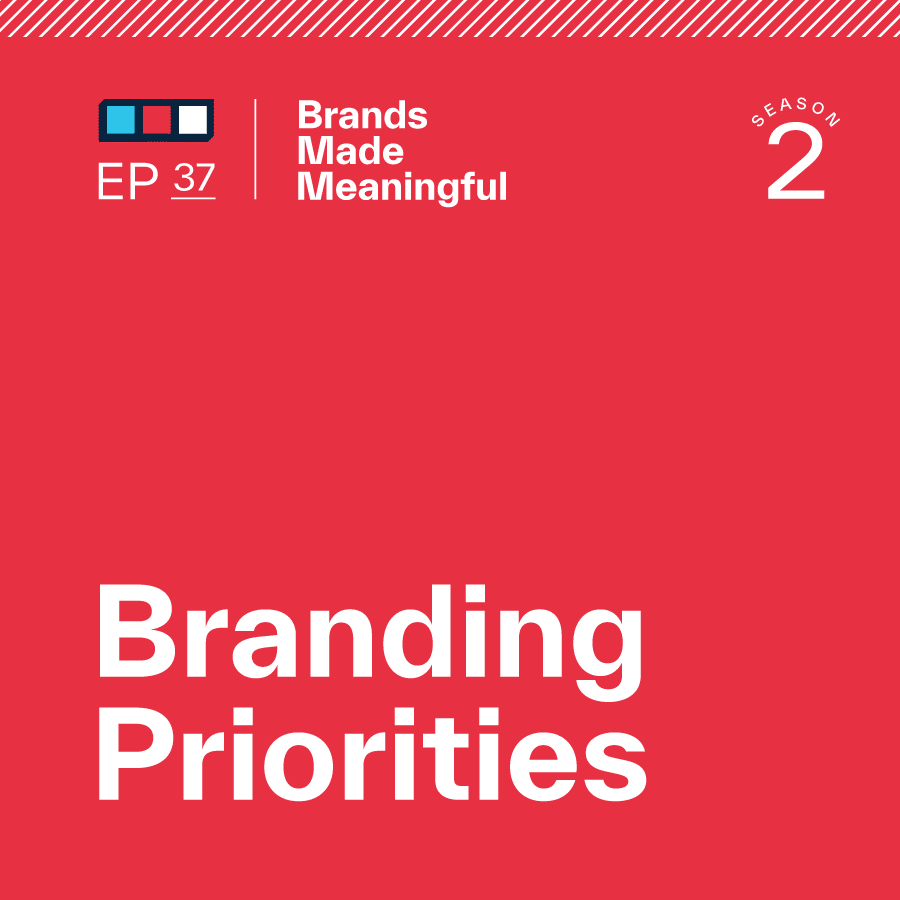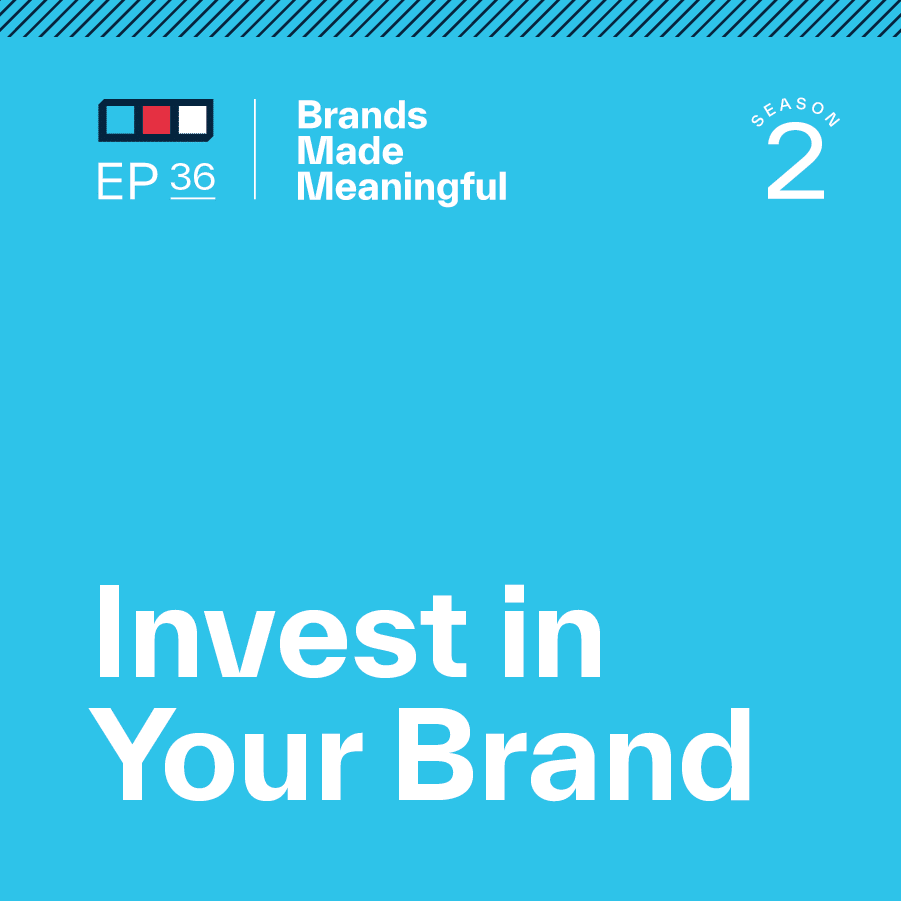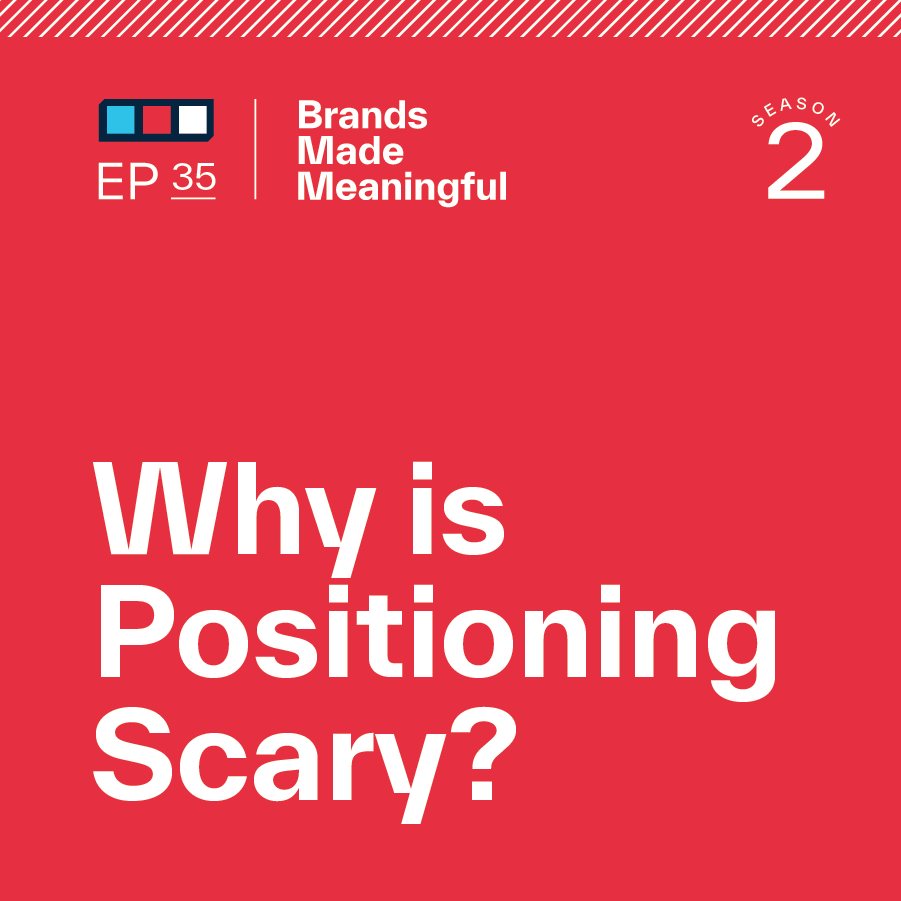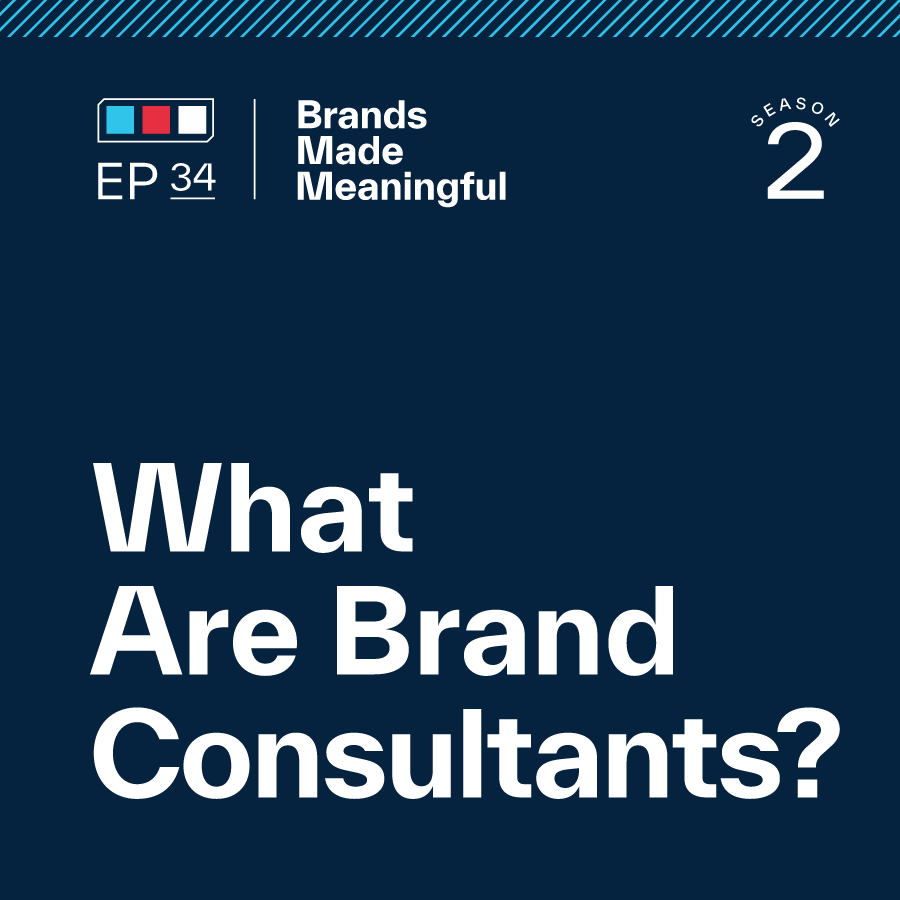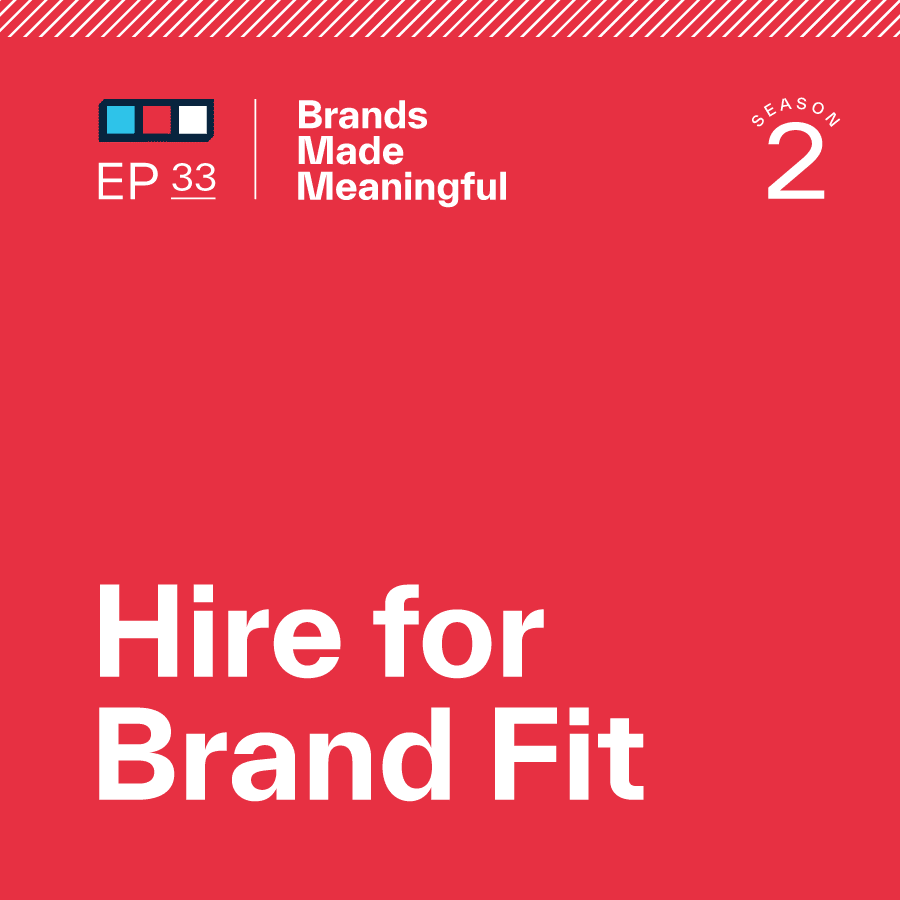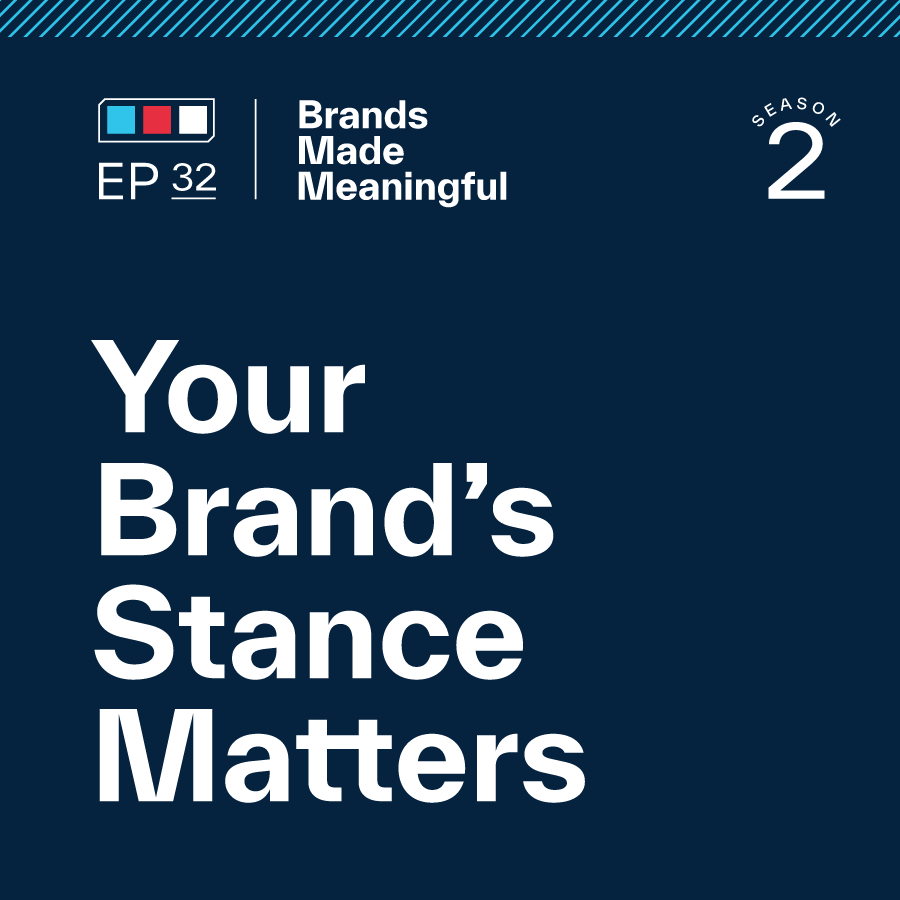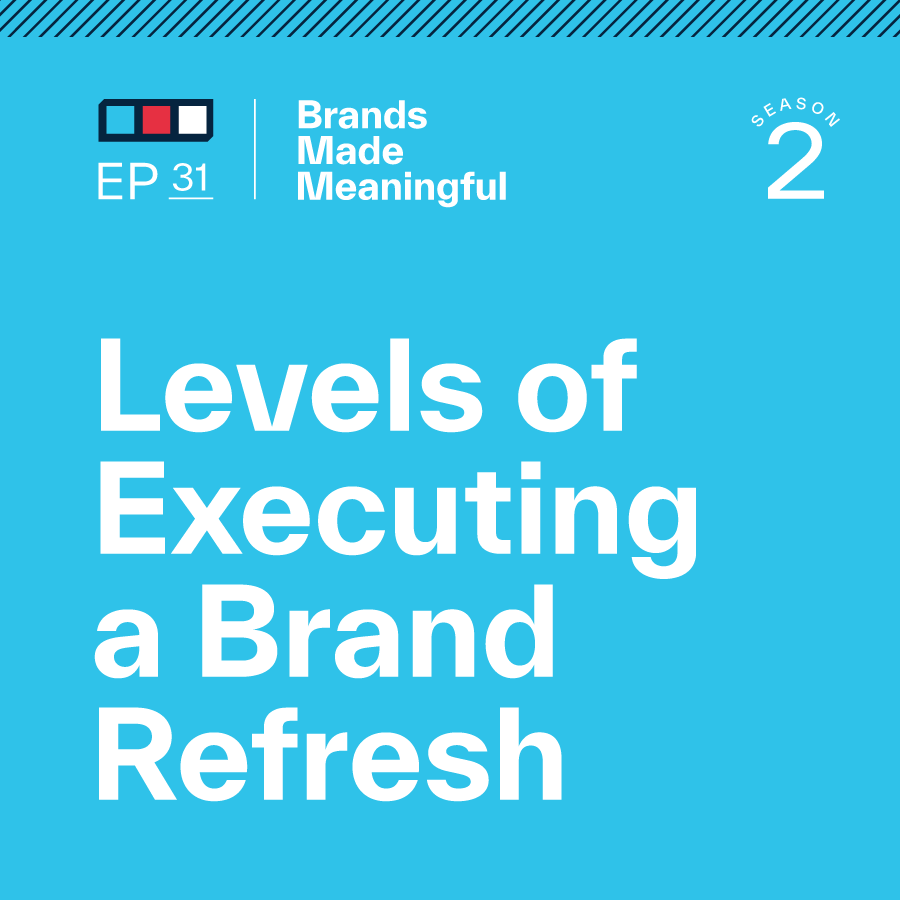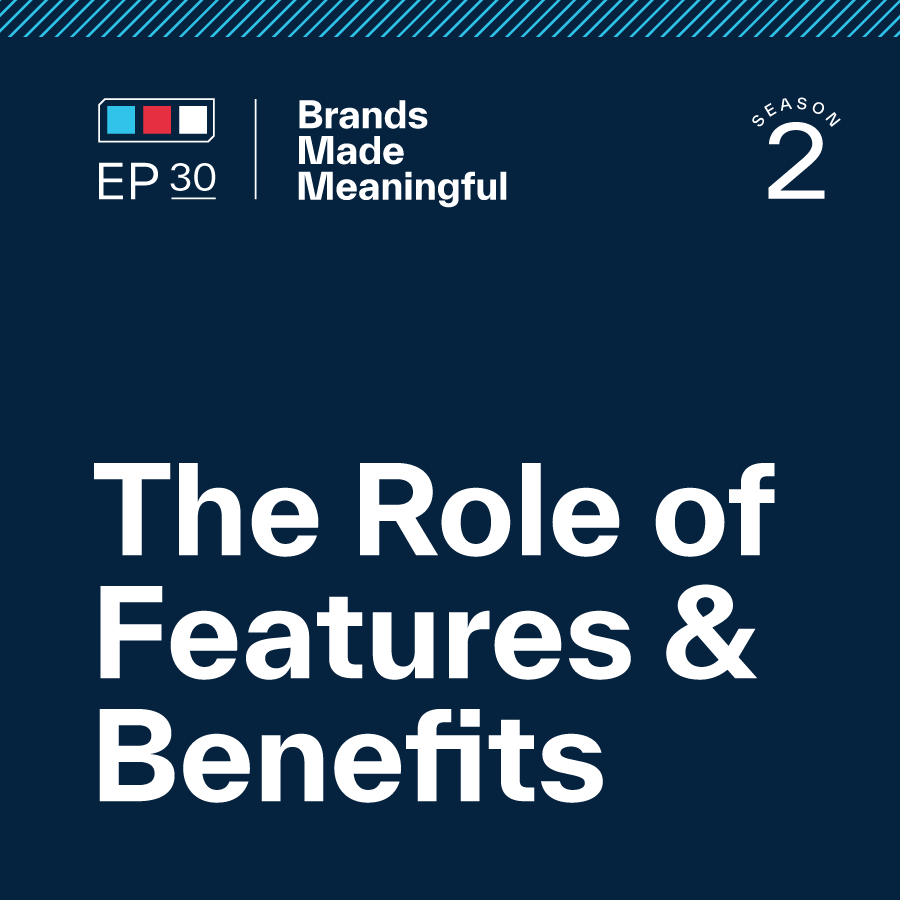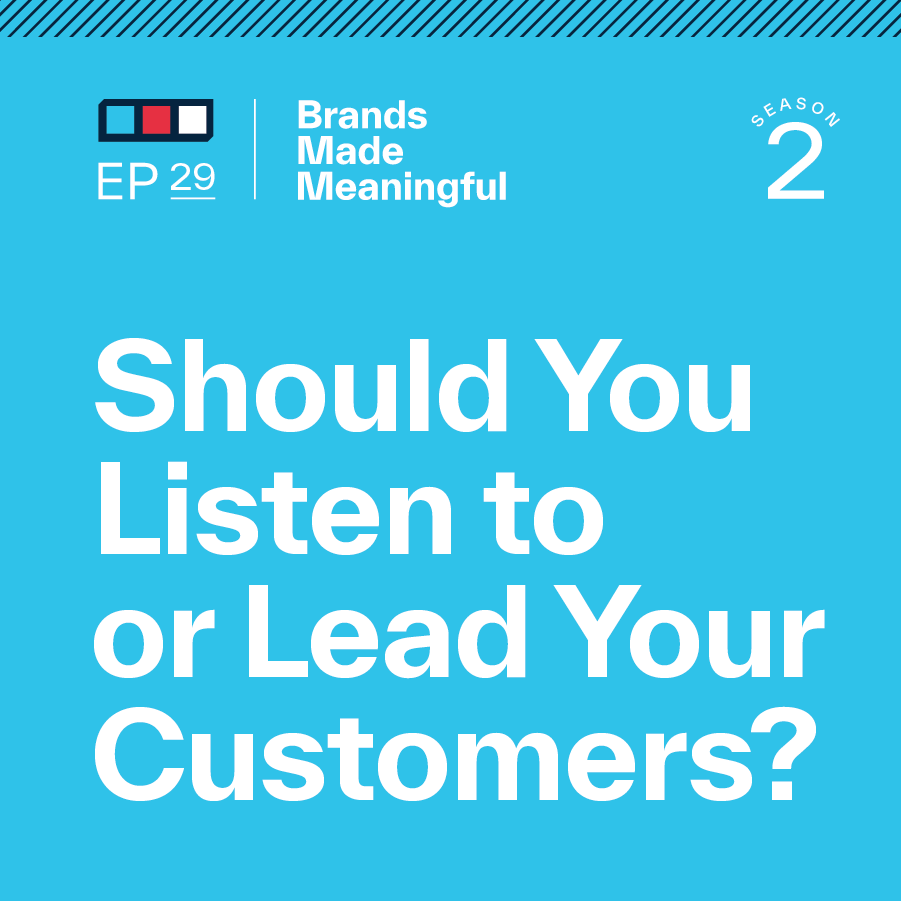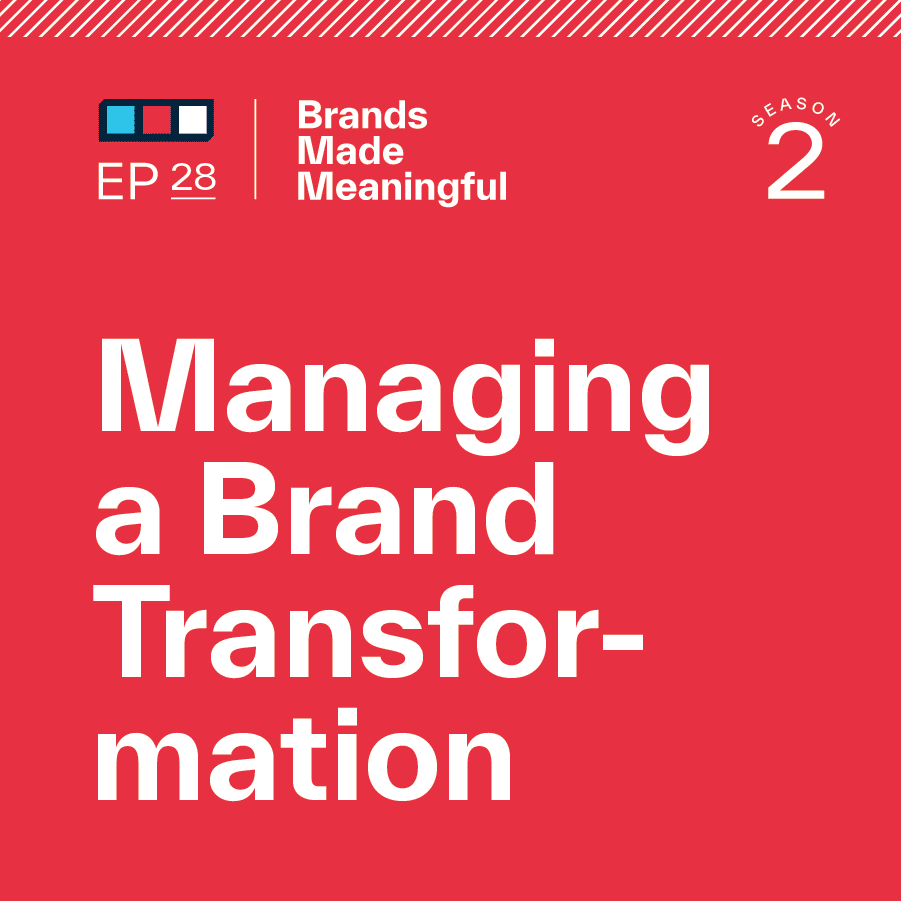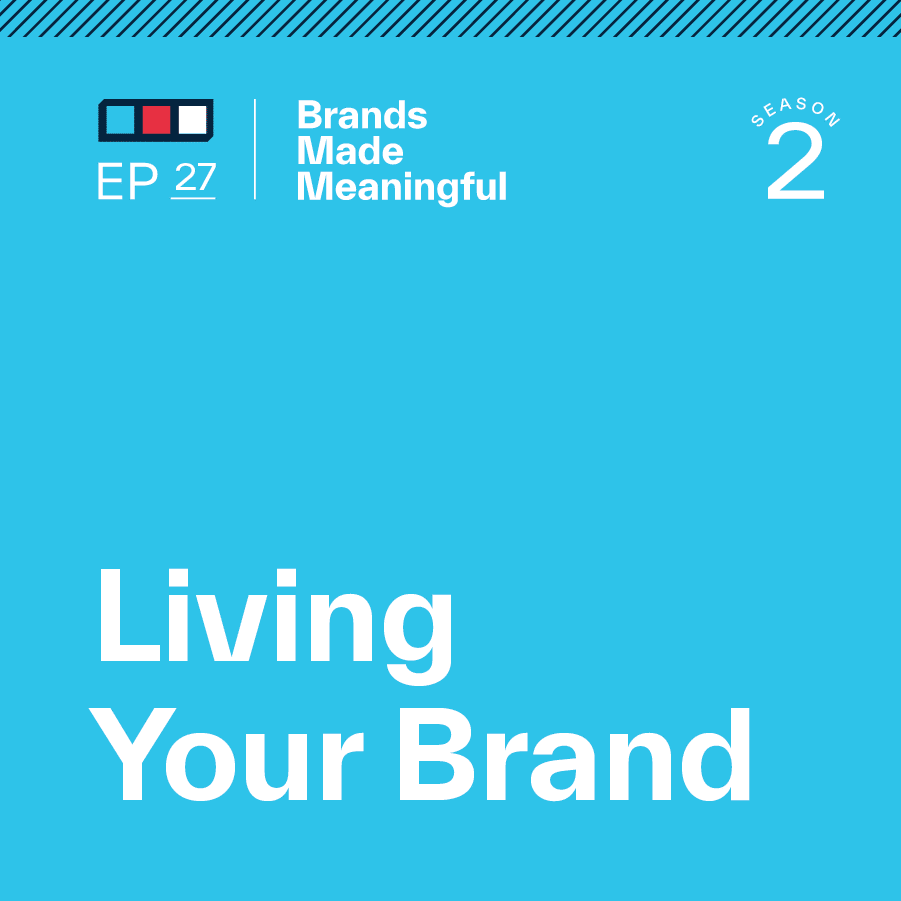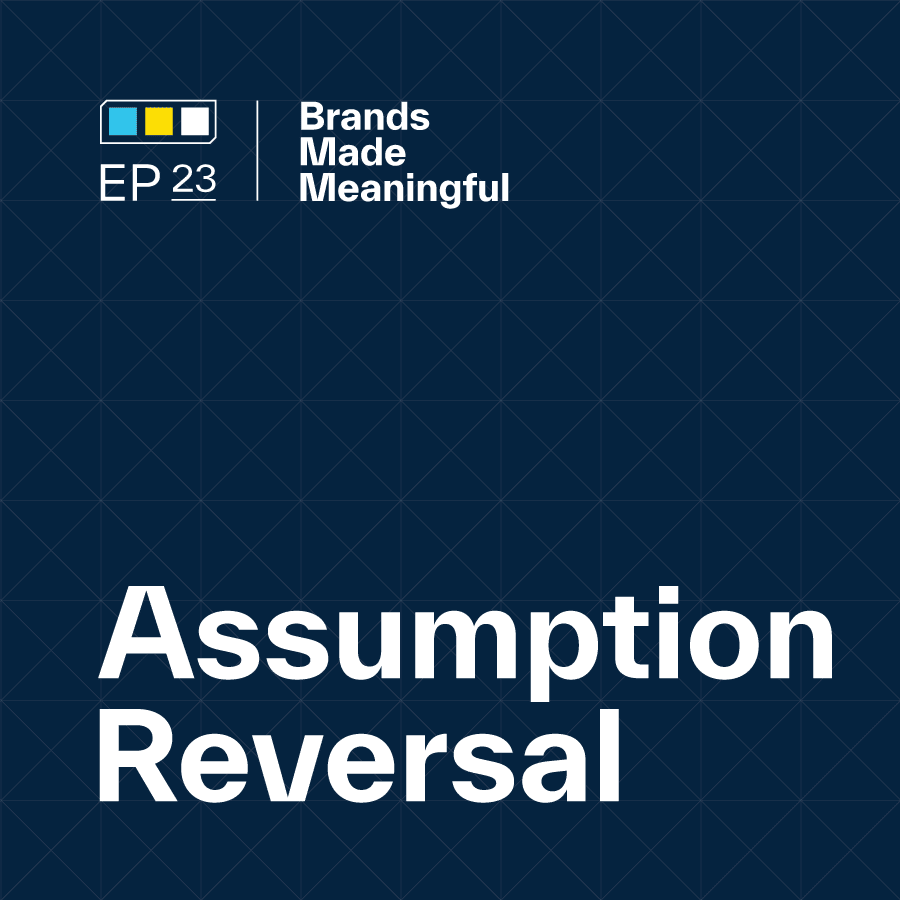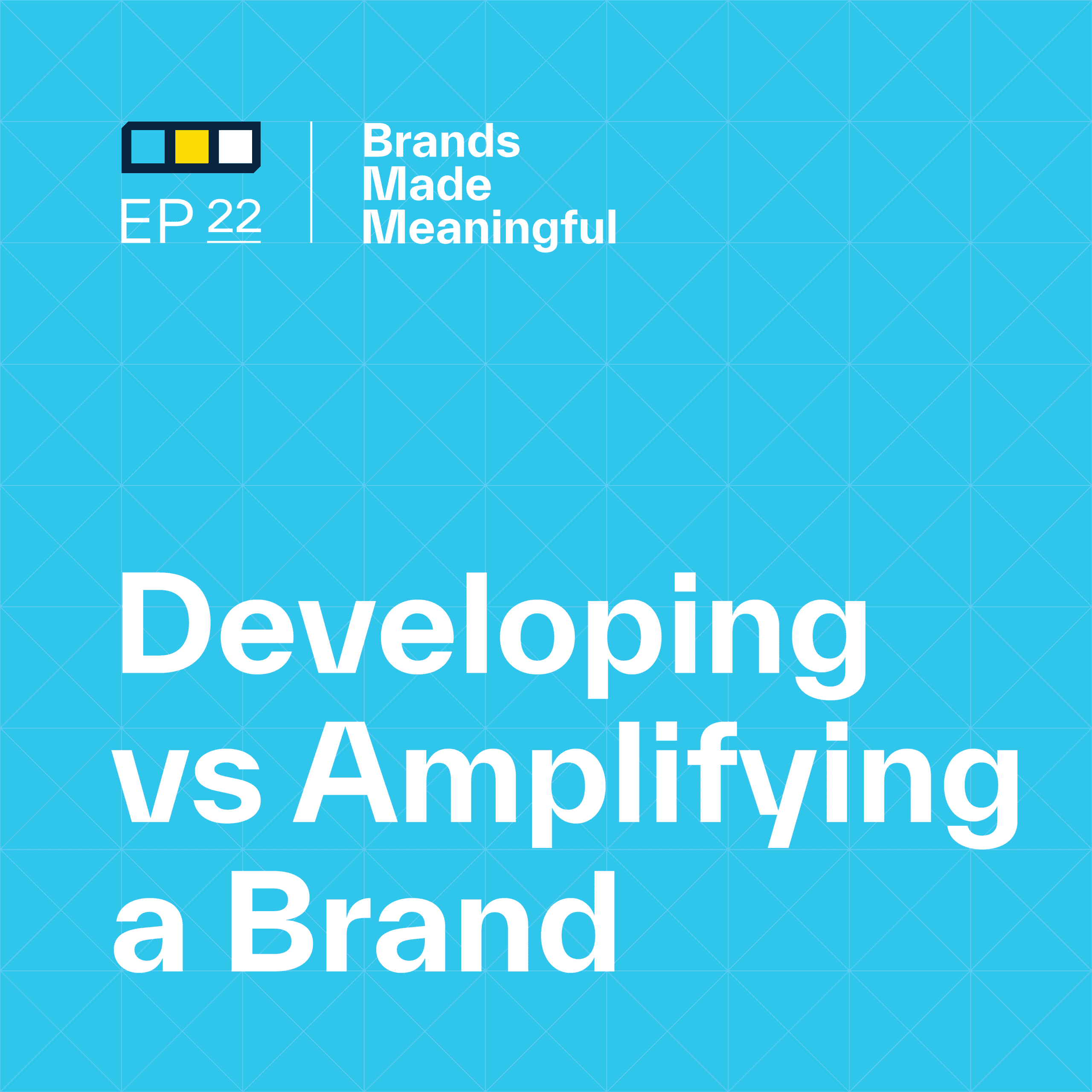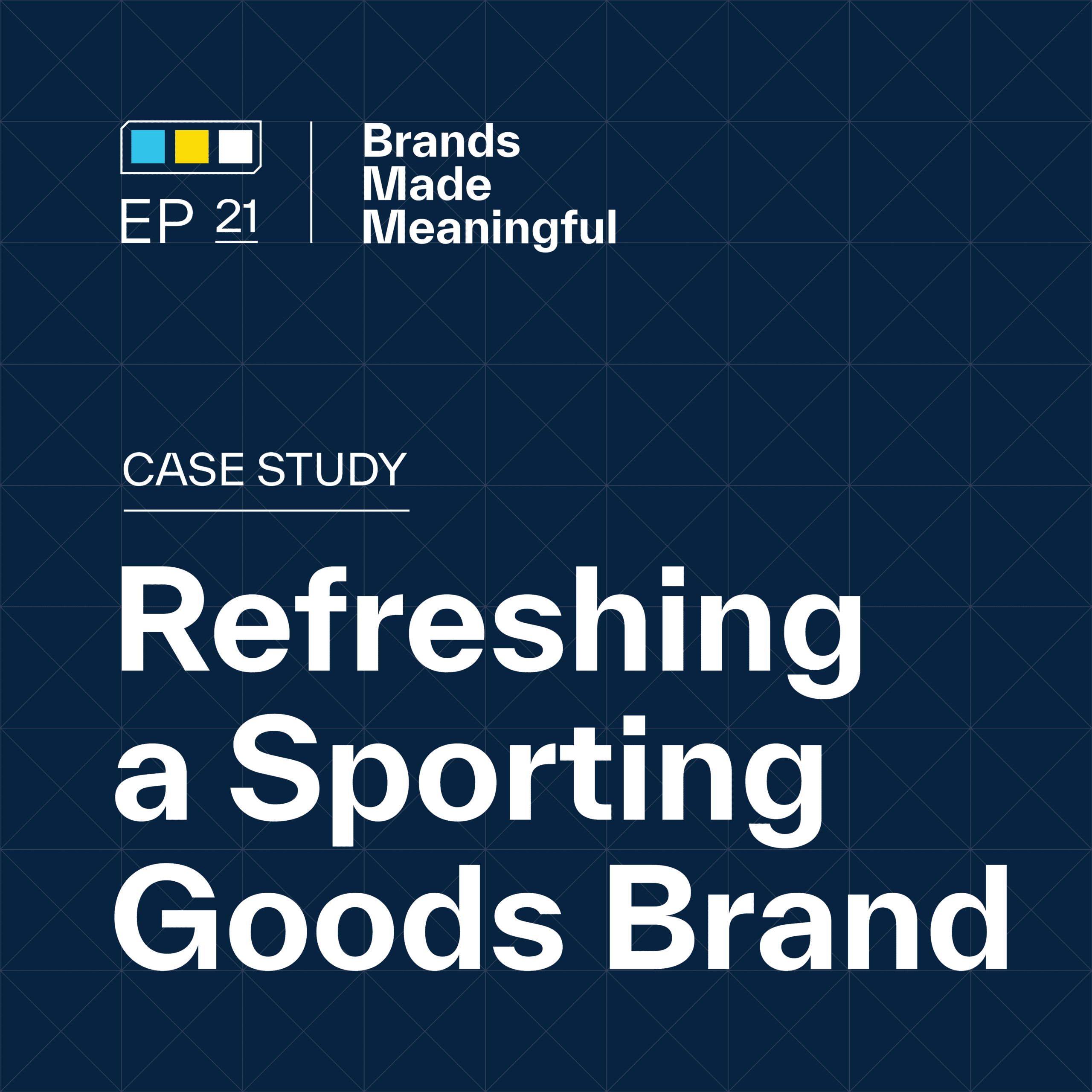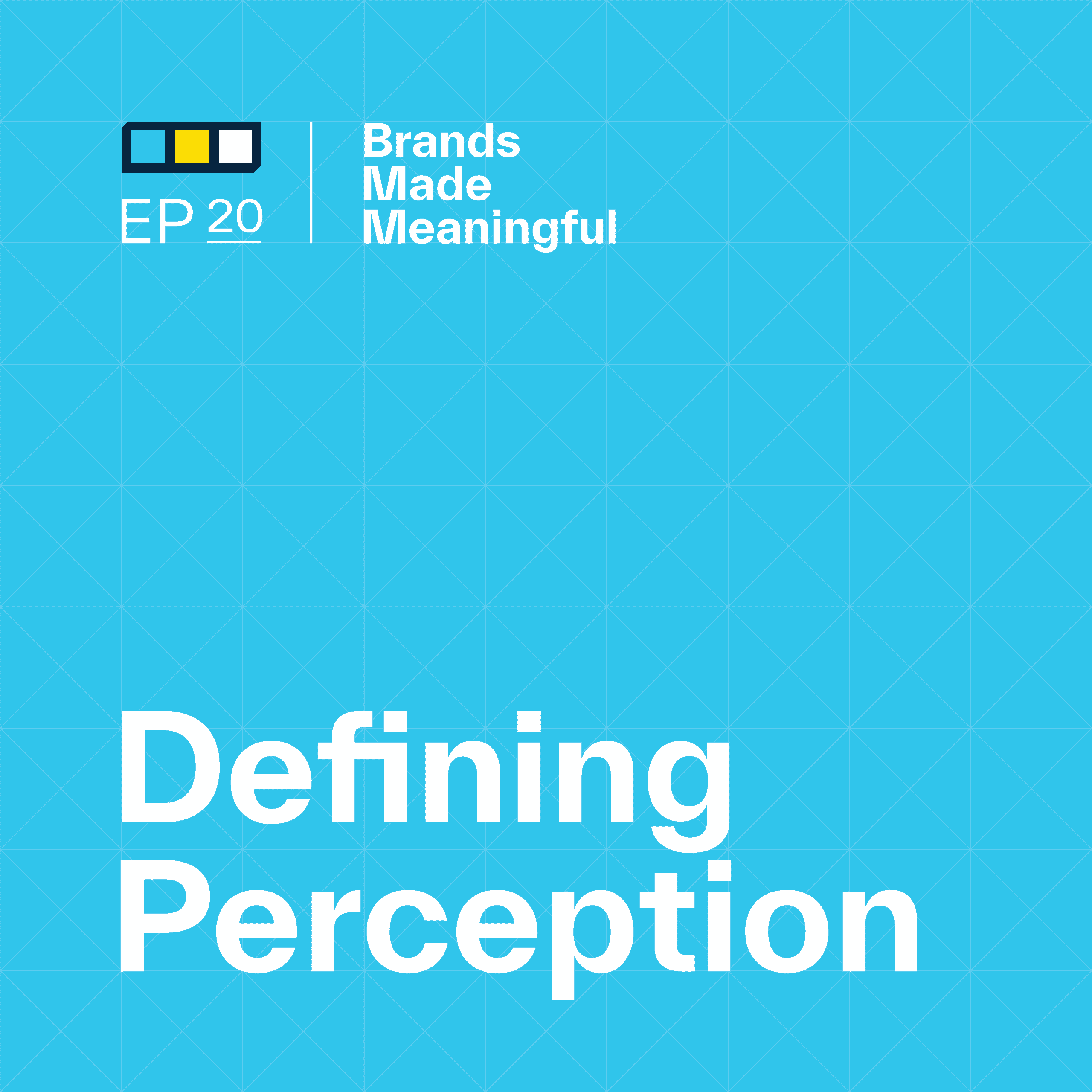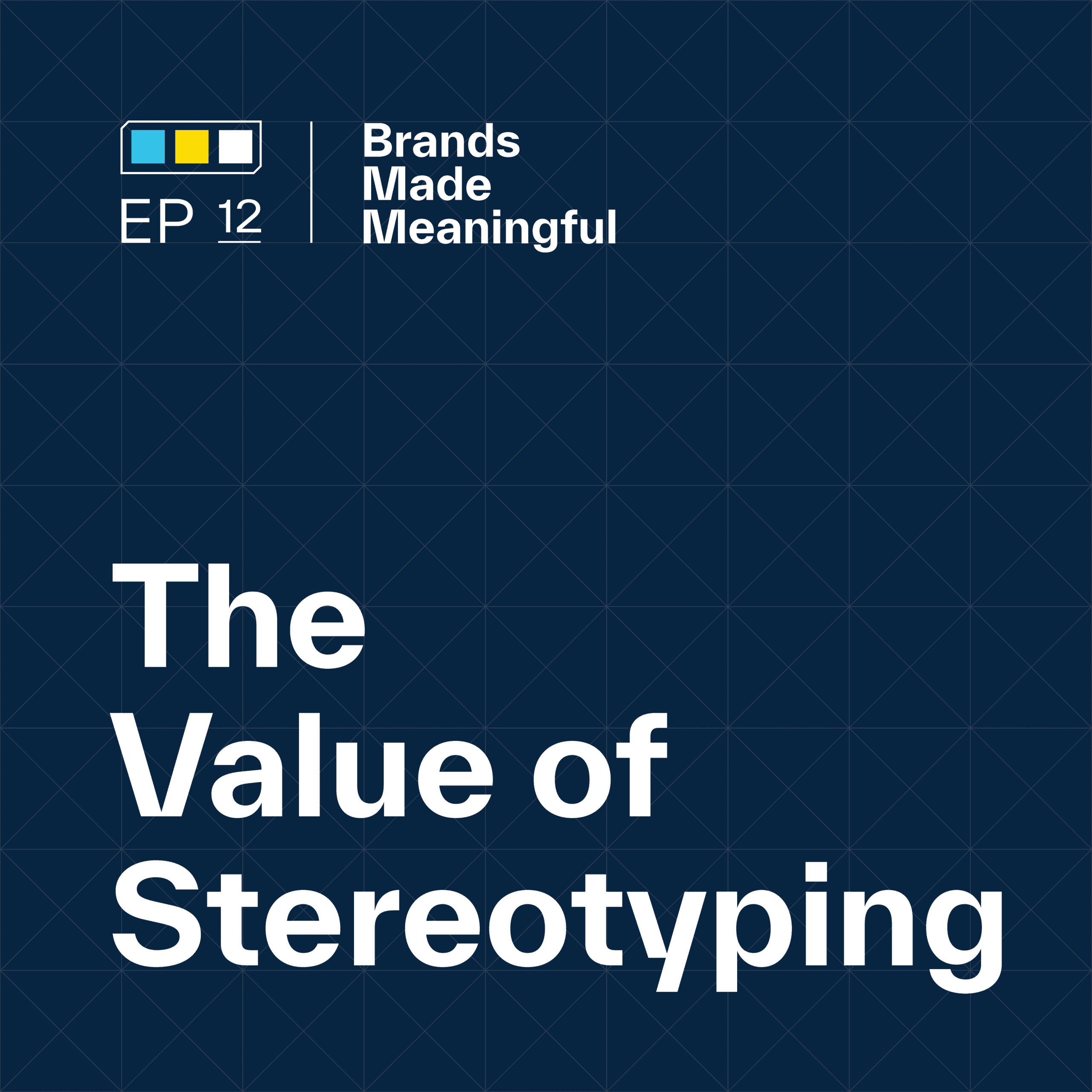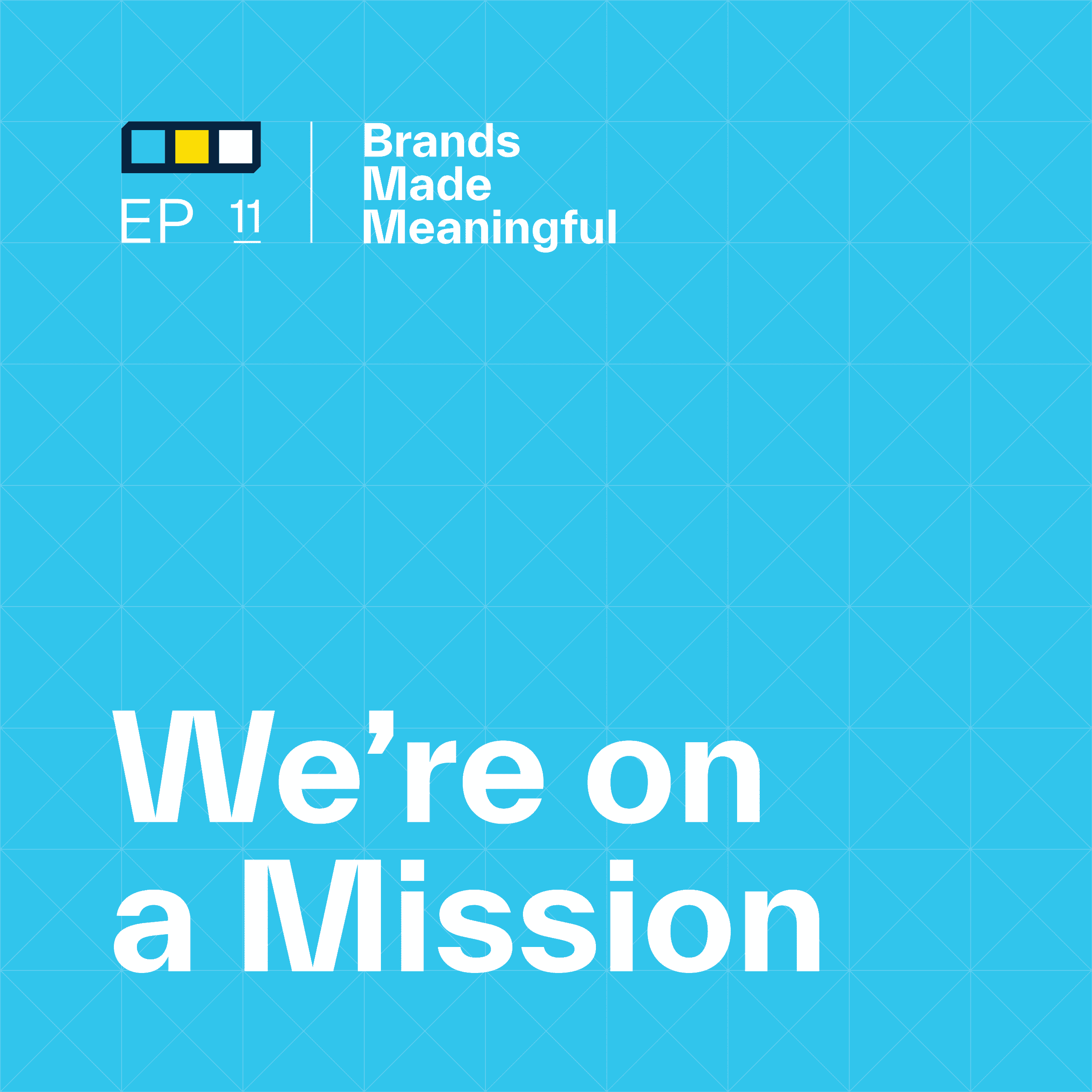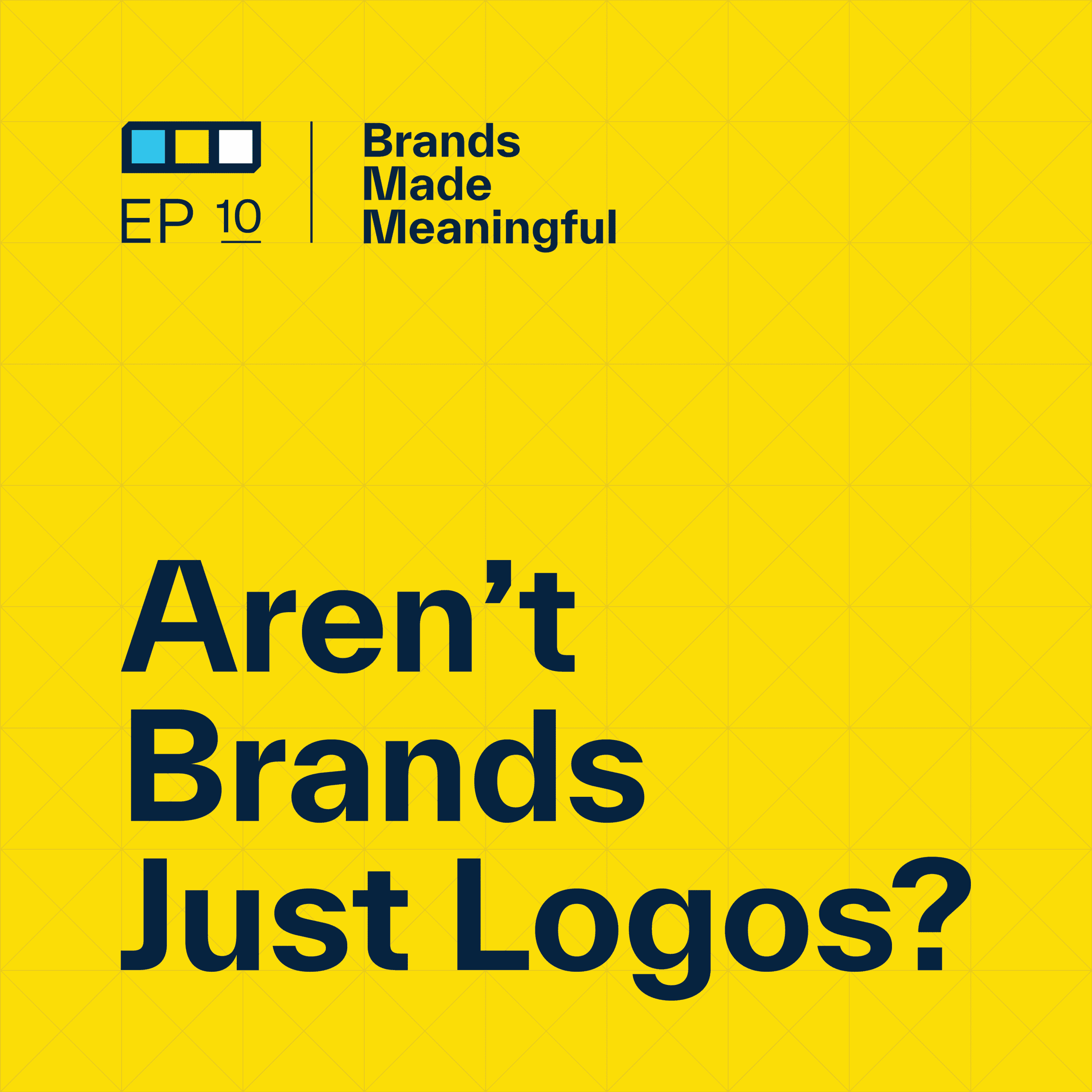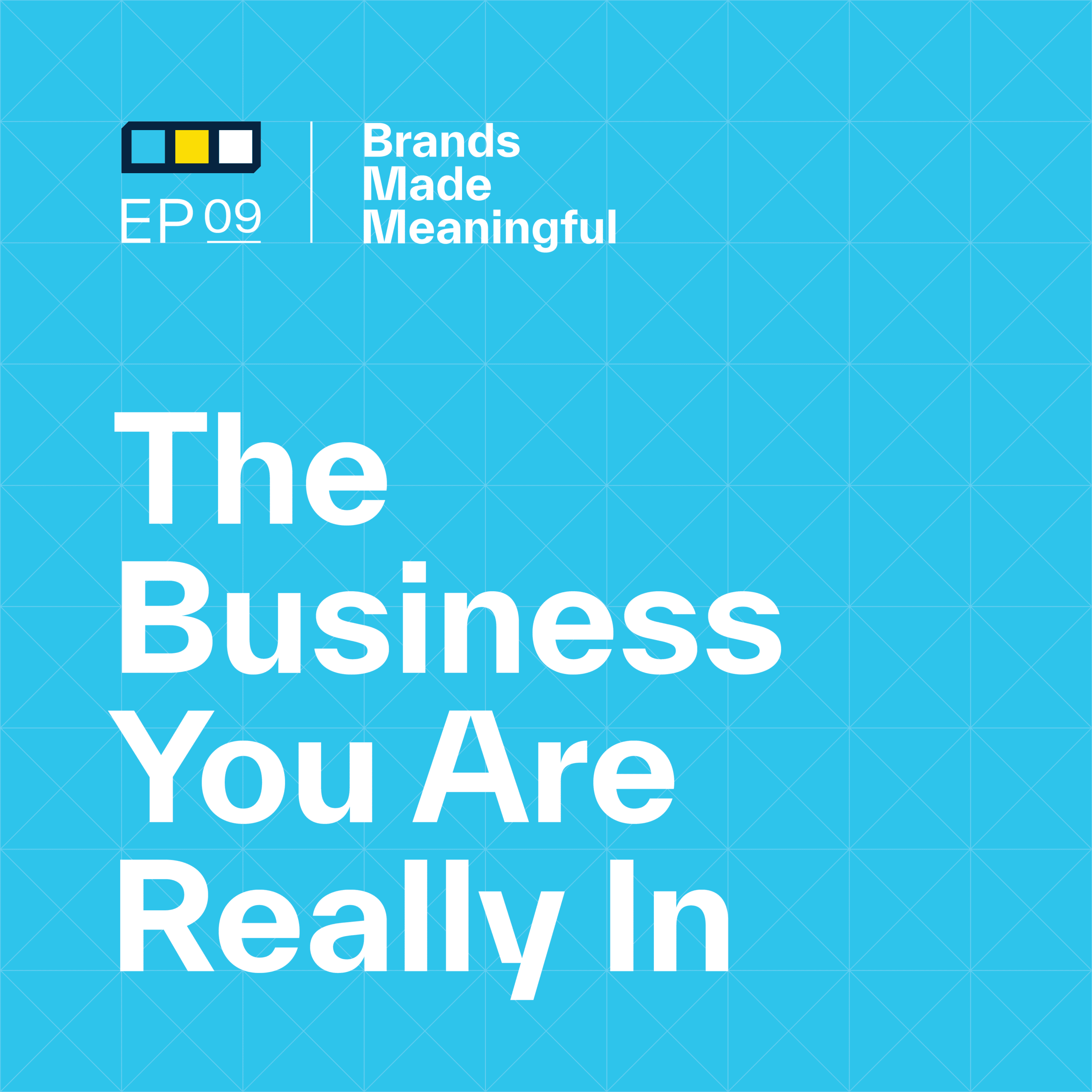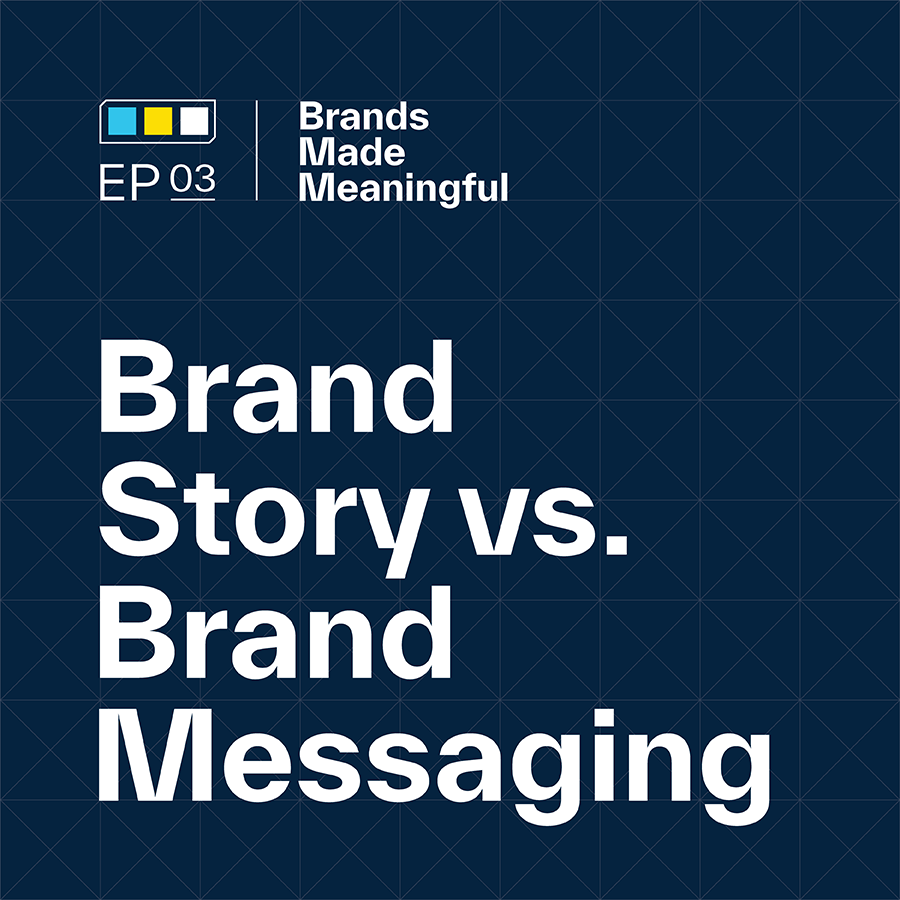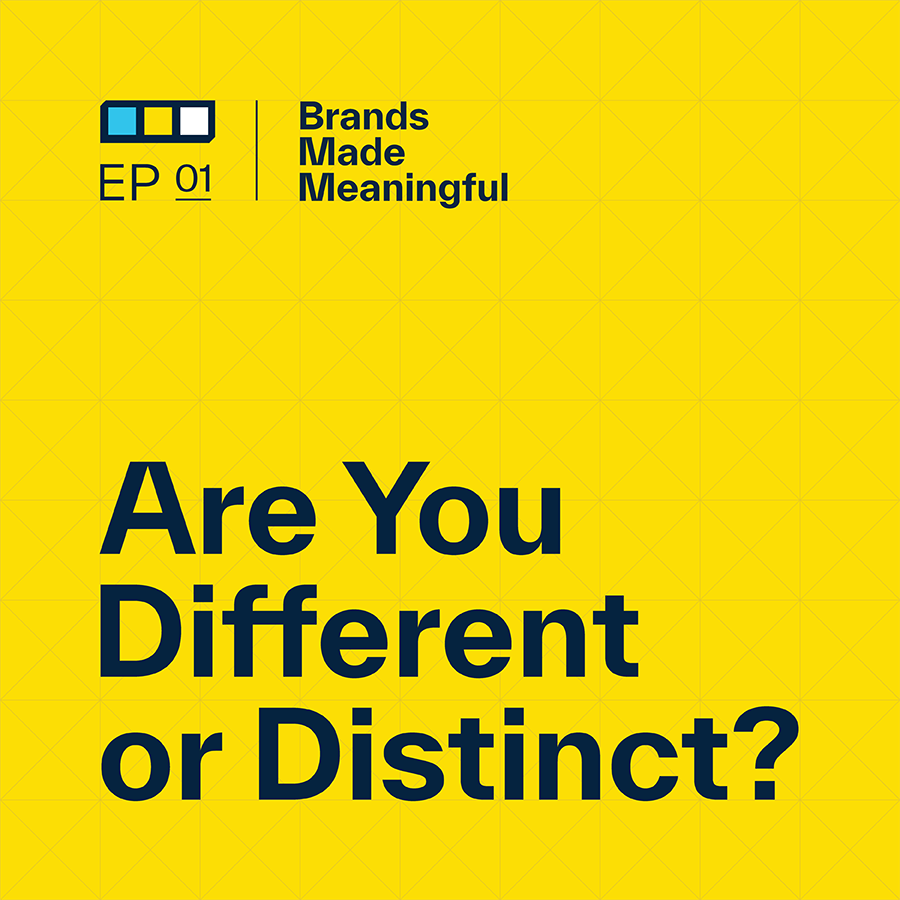EPISODE 14
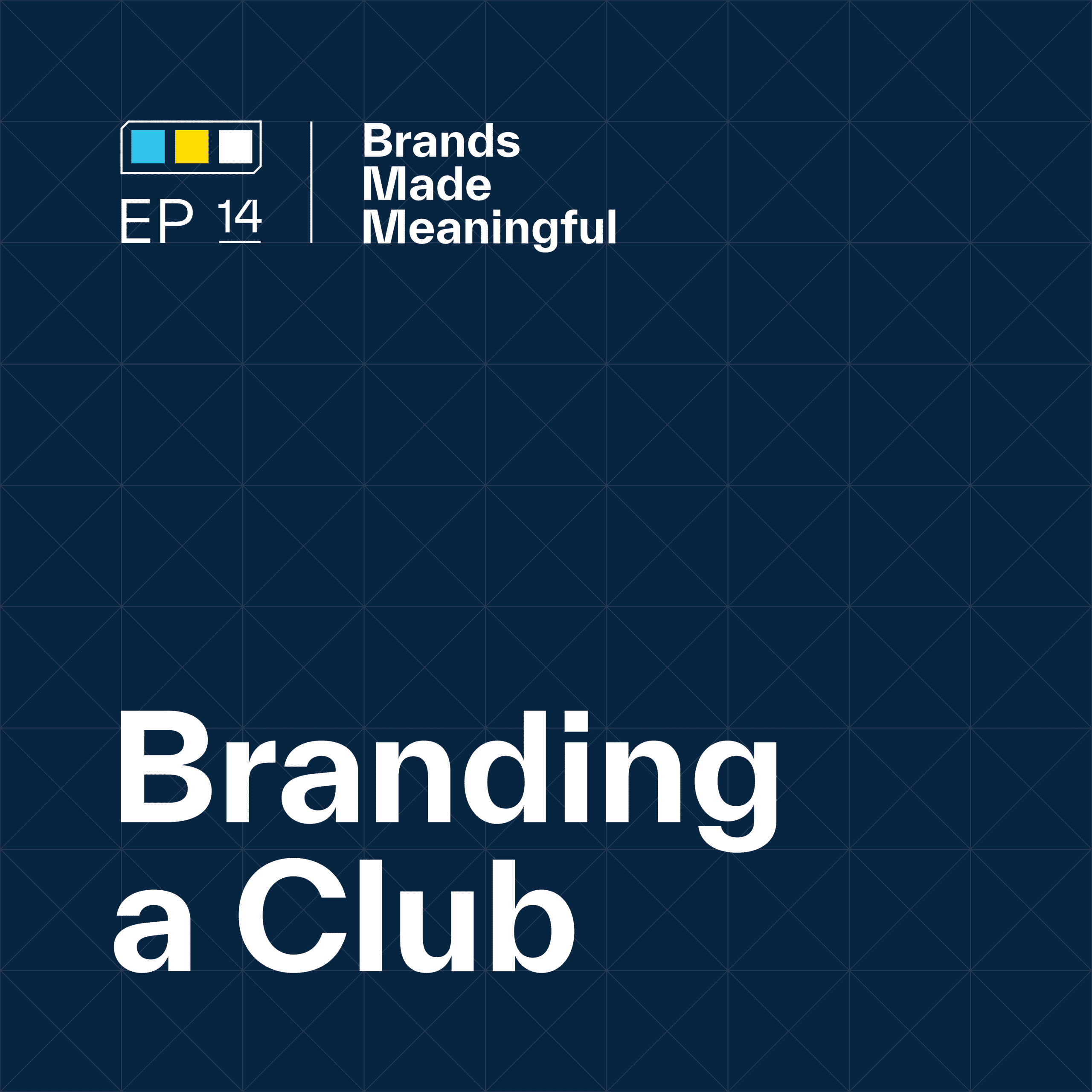
Branding a Club
Episode 14
Derek and Tucker discuss how to brainstorm branding a club.
EPISODE TRANSCRIPTION
Today we’re talking about club brands. Branding a club. Branding an organization that has a membership.
Tucker
And when you say membership, what do you mean?
Expand Full Transcript
Derek I don’t mean for today’s conversation, but certainly in another conversation. But today, I’m not we’re not talking about what we think of as transactional-based memberships, like loyalty programs or like your Costco membership or your Sam’s Club membership or my dollar shave club membership. Things that essentially save you money.
Tucker Product-oriented.
Derek Save you time. But they’re very product oriented. We’re talking about experiential. Yeah.
Tucker Memberships. And they could be service oriented, right? Product or service. But experiential meaning we talk about golf clubs like private golf clubs is a good one to talk about gyms, athletic areas.
Derek Even professional associations or professional types of groups that you might join that you get certain types of benefits from or exclusivity or access for being a part of.
Tucker So why are we talking about clubs then? What brought this conversation on?
Derek What brought it on is we’re currently working with a private golf club and we’re just getting going on a rebrand for them. So this is super top of mind for us. And what’s top of mind is as we were now laying out our process and looking at the process that we follow and determining what the differences and nuances are and need to be to make sure that a club brand is developed correctly and meaningfully, which is different from so. Tucker, we deal with a variety of types of brands. Let’s just go through them super high level so people have an understanding of what we’re talking.
Tucker There’s so many brands.
Derek But at a high level.
Tucker Yeah. So if we’re talking like a B to C consumer brand.
Derek Business to consumer companies that have products and services that are primarily marketed to people to buy them, consumers, customers, products in stores, products online.
Tucker We consider those mostly transactional. Yep. I mean, ideally they’re not. I think the end goal of a brand is to make something not transactional at all, but they’re more transactional based as in you might have a lifetime value, but that lifetime value of a customer is not repeated every month forever. It could be right. I think that this is where it gets really sloppy with the defining of different things because so many different business models kind of cross the line either way. We’re going to talk about the traditional ways of that. So if we go B to B, that’s more of a relationship oriented.
Derek Business to business.
Tucker Yep. Set of deliverables over extended periods of time normally or project based things. I mean, we’re a B2B company, right? So we focus on experiences, but mainly it’s the deliverables that we give our clients. We serve a period of time.
Derek We serve other businesses and organizations rather than selling a product to the end, customer or consumer. Yeah.
Tucker And I think those are like the high level ones.
Derek There’s also we also talk about internal brands. Yeah. Team member brands or human resource brands. Yep.
Tucker It’s the episode before this actually is all about human resource, team member brands.
Derek And employer brands.
Tucker Internal brands. How do we inspire people in our organization with those are not far off of what this is. I think it’s interesting. The nuances aren’t much different to saying your team members, the people who work for you, your staff, your employees, your leadership, really the way that we’re branding towards them isn’t that much different than how we’re going to try to brand towards the members of a club. And the bigger difference is, is like, well, what are they getting out of it? An employer versus a member of a club is they’re getting different things out of it, but the approach is very similar and the questions we ask are very similar to.
Derek One of the things that I think differentiates a member brand versus even B to B or B to C is it’s experiential. What do you get? What does the audience, who is a member who’s probably paid for that membership, which I guess in some respects does make it transactional, whether you need to be invited into that membership or not, there’s a financial transaction.
Tucker For sure, but.
Derek What is it that that audience wants? And I think that’s part of the process that we go through, which we go through with every type of organization that we either brand or rebrand is figuring out who their customer is or audience and what are the most important things that that audience wants from you, from your organization, and in this case, from their membership.
Tucker When we talk about club organizations or club of brands, I like to say that they’re involved in the ultimate long term relationship. They’re focused on serving a tribe. Not only does that tribe need to affiliate with them, but they are all in. And that’s another level of what is the story you’re telling, what are the benefits that you’re giving them outside of just those transactional benefits? And how are we communicating that over time? And I think that. A lot of clubs struggle with this future facing. How do we how do we grow? How do we appeal to the next generation while not destroying our relationship with the old generation? And I think that they’re trying to solve that with the types of services they’re offering, which is an absolute ideal step. But I think a lot of them are missing out on the brand aspect where your brand isn’t appealing to the next generation. And if you do it. Wrong. That brand can totally destroy your reputation with the old generation.
Derek In a previous conversation that we recorded, we talked about story, brand story and one of the. Ways that we define a brand’s story is uncovering the business that you’re really in and that what that business that you’re really in is what people want with respect to what it is that you do. But in defining the story, we also say that your story is not your history.
Tucker Yeah, and that’s a big difference, right? I think a lot of people, we don’t have to get into it really in-depth, but I think a lot of organizations, especially in the club level, love to tout their history and how long they’ve been around and what their what they came from. And I think that’s great to respect it and to mention it and to say, well, this is kind of our expertize. We’ve been around for this long and this is why we do it. But it’s a dangerous game to only be talking about that.
Derek We talk about in Defining Story, we say that the most successful stories aren’t aren’t about how you got here, but it’s about where you’re going. And it’s an invitation for somebody to join you in that journey because they can see where it is you’re going and they can see themselves as part of that journey. And they look forward to this future state today and where it’s going. Yeah, and that’s if you’re a club that we spoke to recently, they have a waiting list. So financially they’re they’re in really good shape. They’re not in some sort of membership drive where they’re where they’re having to recruit people or attract people. They’re in a very financially healthy place. But what continues to motivate them to nurture their brand is to continue to foster that future place and that future state of where they’re they’re always thinking about where they’re going.
Tucker The best brands that are in the club space are always working on on themselves. Even if they’re busy, even if they’re full, they’re always going to work on our perception. We’re always going to work on our experience because we always want to be full. And I think a big part of success is about understanding that these generations aren’t just like right now and then there’s not a new generation in 30 years. It’s that’s a continuous rolling movement where those experiences, those expectations are constantly changing. They’re not just changing every 30 years.
Derek You’re in the memory making business in some respects.
Tucker Some are, yeah, absolutely.
Derek And some of these memberships are generational, depending the age of the club and how the history of how far this goes back, it’s not unusual at all for there to be three, four or more generations of people. But you can’t build your organization on the generational story after story because what the next generation wants and would and is going to be willing to be part of and maintain this membership because they what they want in that community and in that experience and in that environment isn’t necessarily what their grandparents.
Tucker Exactly want or their parents want, for sure, or even some of their peers want. So it’s to really figure out how that translates moving forward.
Derek So let’s get into the weeds a little bit. We don’t talk a lot about process because I think a lot of our our listener are singular. Listen, yeah, probably find it boring, but we have in general a five step process. We have a discovery phase, a strategy phase, an alignment phase, a creative phase and then an amplification or an activation phase. Yeah. So. Does our process do those overarching five steps change if we’re branding a club or a consumer product or a business to business brand?
Tucker No, that’s what makes it a process. If it’s a strong process, then we’re never going to change the process the way that we go about certain things, the nuances of we’re always going to have interviews, but what gets asked in those interviews and the discovery phase is very different. So when it comes to what’s the deliverable that we give on the phases, it’s not much different than the other deliverables, but it’s the it’s the story. And how we approach this and the way that we’re doing it is different within that same structure.
Derek Some businesses are created because the the business owner has a skill like I’m thinking of. We’ll add this to our book club list. But The E-Myth Revisited was a game changer for me, and it talks about the myth that entrepreneurs are actually really smart and business minded when they start businesses. Most of them are practitioners. They were really good at doing something for somebody else and said, Oh, I can do that. Instead of looking at the market or your audience and saying, What is it that this group of people is looking for that isn’t currently being served? And can I give that to them? Yeah, they hang out a shingle and say, Here we are, this is who we are, come to us. And so it’s an interesting nuance in how we look at the audience and in studying the audience is one of the. This sounds really common sense, but from B to C, B to B member, internal understanding, the audience, the profiles, the personas of these human beings makes all the difference in the world in what comes later in language and visuals and how that’s communicated.
Tucker Yeah, some really smart person once said A brand is a brand, whether it’s B to B, B to C. What we’re really trying to do is promote the value of this company or this organization, and we’re trying to increase the understanding of or perception. Really. It’s like it’s for me, it’s I want you to seem a higher perception than you are today. And so with branding, it’s really the same process. Like you’re saying, same process. No matter what the brand is, the nuances come in with who are the customers that we’re talking to or who are the members that we’re looking at and what do they really want from us? And that’s not going to really change within our process, but that’s definitely going to change with the end. The end state looks like.
Derek Like one of our favorite questions to ask our clients is what is success look like to you? And I think one of the most important questions that our clients can ask their audience and I’m saying audience, because this could be your internal team, your buyer, your but in this case, member, either prospective or current member is to say, what do you what do you value most about being part of this organization? And I think we get beyond in that Q&A and discovery process. When we identify those profiles of those people, we’re getting beyond features and benefits and amenities. I think there’s a certain if you’re a member organization, there are certain things that you probably need to provide to compete with whoever else might be vying for that person’s attention. If you’re a golf club, maybe you have a gym or a pool or a tennis court, I don’t know. Maybe not, maybe a restaurant. So there are some features and benefits. But how do we what what’s the real decision making factor in me joining this club versus this club? If there’s we’re getting to this an emotional place that we don’t often get to when it comes to consumer goods.
Tucker Well, and how do you increase the value of your club? Is that the only way to do it is with features and benefits, or is it the perceived value? A lot of clubs rely on status. If we can increase the perceived status that you’ll get from joining this club, then that will go a long way to increasing our value and maybe even up front class costs and the monthly cost because the status is worth it. It’s interesting to talk about clubs and I think the biggest challenge that we have with communicating the difference is that the difference is what you guys sell and that’s not changing between B to B, B to C, any of these things is like what you sell to your point. If you’re a vacation club or like a timeshare, what you’re selling is memories, right? Right. It’s almost like if you can figure out what business you’re really in, then it shouldn’t really matter if you’re a B to B, B to C, any of these other things. There are nuances, absolutely. But. That’s kind of why we go through the process. We do because it’s kind of time tested across multiple different avenues, multiple different industries. How do we get this right so that it can keep working and give us something to work off of?
Derek Yeah, getting getting to the core of that story and understanding. What it is that people really want from you. What that business really is in is is going to be that golden nugget that helps you communicate the difference when so many of the other things may be similar. If if the cost of entry is the same, if the product is the same, location certainly will have something to do with that potentially historical part of like family connections, family history. These are all great factors, but it’s combining them, looking at them and reviewing them and figuring out which of these are the ones that make the the experience and the culture and the value of what your organization provides to its members. That’s different then, and you get to define it. That’s the great part. As a member driven organization, yes, you need members to survive. But as long as there are enough potential members that are willing to pay what it needs to support its organization, you can create that perception.
Tucker So we talk we’re kind of going a little sideways here. And I think that bringing it back to the idea of clubs, I think when when we talk about clubs right now, we’re talking about a golf private golf club because it’s the easiest to perceive because it’s like, okay, that makes most people know what a private golf club is like. I’m not a part of one, but I know what that is and I know what goes into that and the perception and all this other stuff. But if you think about it, it’s not just those kind of clubs, right? You even mentioned earlier, before we hit record about the idea of a club level in a stadium. Yep. There’s this idea of what? There’s club level and sometimes that means other things. But even like the clubs in sporting events, in the clubs, in airline. Yep. Whatever airports and saying there’s clubs and figuring out what is that club? Is it a subbrand? Is it your primary brand? Is it all this other stuff? I think there’s multiple different levels, but thinking it’s just comes right back to the idea of what is the perception you’re trying to create with this club, what value you bringing to them, and then what do you want them to think about it? So then when I look when I look at what is the value of branding or rebranding that club? Yeah, what I have is a club is all about creating pride of affiliation. The brand of a club should be the driving force of that pride. So we want people to wear it. We want people to spread the word about it. We want people to be really proud of the club that they’re a part of, whether that’s the airline club or if that’s a part of this private golf club, or if that’s even going to a stadium and being like, No, I’m a part of their membership. Like, I just really enjoy this team and I wear their stuff and I’m really proud of it. So if a brand’s all about creating that tribe, then this club needs to do that to the next level. How are we creating pride of affiliation?
Derek Yeah, you’re that’s a that’s a great way to put it. Think of the brands that of just consumer products that you have some sort of backing of or you like their clothes, you like how they fit and you’re actually willing to wear that that logo on your shirt. Wearing the logo of a organization that you’re a member of is next level. And that symbol needs to symbolize what that membership and the value of that membership and the the pride of affiliation is a great way to put it of being part of that tribe that you’re proud to wear and promote.
Tucker Yeah.
Derek I think it’s huge.
Tucker I think when we talk about it at the club level, it matters a ton with clubs to do pride of affiliation, but that’s across the board. I mean, I would never go into a consumer branding product or a product branding project and say, Oh, we’re not trying to create pride of affiliation. That’s always the end goal. Absolutely. It’s just another level when you’re talking about clubs. So what else can what else? What else is the value of branding or rebranding a club like? What are what are people who are listening? What are they getting out of it?
Derek I think. Getting to. I’m going back to you. What is it that members are looking for? Because I think every club, from club to club and I just want to stay with the golf course analogy for now. Yeah. In our community there are, I don’t know, 30 or so three dozen different private golf courses. And I’m not a member of one either, but I’ve had the fortune of visiting most of them and can describe for you from a visitor standpoint or a visitors experience my perception of the difference in each and what they’ve chosen is important to them and how they communicate that importance in the way they greet you, talk to you, service, you know, the restrictions, the rules, the access. So some clubs are about providing exclusivity, some are about status, some are about giving you a privacy, a safe place to go be with more people like me, that tribal mentality. But I think for many of these, it it helps create demand. So even when you do have a waiting list, you’re always selling, always continuously nurturing that pipeline of future members to maintain that health. I think branding your club fosters your culture.
Tucker So let’s talk about that a little bit. Culture. I mean, some people would think, what do you mean by culture? And the way I think of culture is the way that people celebrate and communicate with each other and how they act with one another. How can a brand really foster a culture without it with throughout a club?
Derek Well, I think the back up process, I think the way that they would uncover. What that culture is, or even to be able to just articulate it and put it into words is going through the steps of defining what is the what, what’s the what are the core values of the people that work here in our members here? What are the attributes of the type of people that we that we as the people who run this club or manage the club are looking for?
Tucker How do they interact with each other? I think answering the question of how do they communicate is a really big thing with clubs. How does the front desk greet people? How do we say no to people? How do we make sure everything’s alright? How do we do that to members across the board consistently? How do we create a culture where the members are actually communicating with each other the right way so that we’re we’re fostering that culture throughout the whole place? And I think to your point, the hard part about defining a culture in a club brand is a lot of the culture has to do with the members. So some of it’s out of your out of your hands. But you do know the type of people that you’re inviting into your club. And I think that when we get into how we would brand a club, we would say, what kind of culture are we trying to create? Which helps us determine what kind of members do we want in this club.
Derek Which then from a branding from that, the craft and act of branding then informs and inspires the types of messaging and how that tone and personality of the messaging that gets produced and written for all those various sorts of communication.
Tucker And the creative right. How does that what is the visual communication there? How do we look? How do we need to look? How do our brochures look? How does the front desk look?
Derek But everybody but that’s the problem is that’s where most people go. They go right out of the gate. They say, you know what, our logo is tired, it’s old, we need an update. Members aren’t happy. They’re not proud to wear this logo anymore. We need a new logo. Let’s can you just design us a new logo? And one of my favorite lines, I think this is from Blair ends from when without pitching says The success of our outcomes is rooted in the strength of our process. And it goes back to it’s the same steps. It’s understanding what the opportunity is, the pros and cons, the objectives, who we’re talking to, what they want, the business that we’re really in, what is our culture that we want to proactively foster? And then how do we communicate that culture in messaging and in a visual and in a symbol that sums up what our community stands for?
Tucker And I think that doing that really well, especially the community, because a lot of the club has to do with community and the culture and the location and the space, the.
Derek Environment, the atmosphere.
Tucker If we can do that really well, then that’s moving the club in the right direction to not only be perceived as valuable. Absolutely, but trying to communicate. How do we connect with the next generation? Right. That’s the overarching problem for clubs. How do we keep our generations interested year after year, generation after generation, without losing the old ones? How do we maintain that? And I think that this brand that fosters a culture, not a culture built on history, but a culture built on beliefs and communications and experiences that will help move it forward in the right direction. Instead of focusing so hard on what used to be, it’s what is and what it’s going to be.
Derek And it we say this all the time, but it bears saying again, that brand and everything that you just described, the brand is not the logo. The brand is the reputation that you are proactively working on fostering, creating and nurturing to best represent your organization, to be authentic to who you are, the people that are part of that, and the type of people that you want to attract. So it’s way more than just that symbol, the symbols important, but the brand is much more than just that.
Tucker So absolutely. And I think the brand when a lot of people think of a club brand, it’s just work. What are your members think of you? But it’s what a prospective members think of you. What do members of other clubs think of you that is your brand. How you perceive yourself is important, but there’s way more importance on how other people perceive you. And then in the community, to your point, if you’re saying Here are three clubs and let’s use the airlines as an example here, there’s three clubs here. Whether or not I’m a part of one of them, I have a perception of all three of those, right? Or I have a perception of all the clubs out there to go. And I like that one. I don’t know, I’m indifferent about that one and I really don’t like that one. I don’t think there’s value in there. And when I talk to somebody outside of this, I’ll have that perception and I’ll probably put that on them. And then that perception spreads like wildfire, right? So when we have a club. It’s really, really important for your members to love where they’re at, but it’s even more important for the community to go. Yeah, they do great stuff over there. Like, I wish I could be a member of that. It’s just not in my cards right now. But I would love to be a member no matter what. It’s never okay to make your. In my mind, it’s never okay to make your club feel so prestigious that you’re just not even like no one can even touch you unless that’s the members need that. So it’s like there’s this balance of who are you and how do you want to be perceived? But then there’s this How do you want other people to perceive you? Do you want other people to perceive you as untouchable? Because that makes it more difficult to get members, but the members who do stay here forever. So it’s it’s a balance. I think there’s nuances.
Derek Yeah. Think of. One more time. On the golf club analogy, you can think of all ranges of accessibility and approachability and none are incorrect. It’s just making the intentional, purposeful decision on what’s right for you and then figuring out how the members align with that and then getting to the root of that culture. That is the experience of your organization, place, atmosphere and the value that you provide and then telling that story.
Tucker So before we wrap up here, what is what do you think is the one? Big takeaway from this conversation as it pertains to a club and its brand.
Derek I think for me, the most important nuance in branding a club versus branding a product or a business is making sure that you’re having as many conversations as you can with current membership, past membership, and potentially even future membership. Getting a clear understanding of what they want, what they’re looking for, and then being purposeful in defining what it is that you want your club to be. So you have a set of objectives that guide, messaging, creating, and all the other pieces that go into branding.
Tucker I would say if I were to give one person advice. When it comes to club branding, I would say inspire the future and respect the past. If you can get people excited about where this club is going, but they still feel honored to be a part of something that’s special enough to have a past. Then you’ve hit the golden nugget. In my mind, that’s. That’s gold. So if you can really do that, then you’re in good shape.
Derek Love it. Let’s pick this up next time.
Tucker Let’s join a club.
Derek Susan is a branding firm specializing in helping companies make a meaningful mark, guiding marketing leaders who are working to make their brand communicate better, stand out and engage audiences to grow their business. For more on Susana, visit Susana Rt.com.
More Episodes Like This
Building Brand GuidelinesEpisode 65
Derek and Tucker show us how to build infrastructure guidelines to unify your brand experience across the board.
Club Identity SystemsEpisode 64
Derek and Tucker cover what Identity Systems entail and how to discern between internal and external methodologies.
Navigating Branding With a BoardEpisode 63
Derek and Tucker bring clarity to uniting your company under one cohesive vision.
Putting a Committee TogetherEpisode 62
Derek and Tucker assemble your need-to-know facts when putting together your committee.
The Guiding Principles of Private ClubsEpisode 61
Derek and Tucker go over the top ways private clubs can find the balance between pleasing old members while attracting new ones, all while making moves towards the future.
How Color Affects PerceptionEpisode 60
Derek and Tucker cover how to best convey your business with color.
Brand EcosystemsEpisode 59
Derek and Tucker break down how to craft effortless experiences when considering your brand as a whole.
6 Types of Brand TransformationEpisode 58
Derek and Tucker dive into 6 distinct types of transformations for a wide range of brands.
Tournament Branding For ClubsEpisode 57
Derek and Tucker discuss designing and delighting your club members with tailored events.
Brand Promoters & DetractorsEpisode 56
Derek and Tucker discuss how high level promoters increase your NPS and how to turn the tides on your detractors.
The Loudest Voices in the RoomEpisode 55
Derek and Tucker talk about gathering feedback while prioritizing every voice.
Determining A Primary AudienceEpisode 54
Derek and Tucker discuss if and when you should be honing in on your audience vs. casting as wide a net as possible.
Branding For ExclusivityEpisode 53
Derek and Tucker discuss the intricate process of naming your brand.
Measuring Brand SuccessEpisode 52
Derek and Tucker discuss how we measure our success in branding and a few key KPIs that help us understand our impact.
Branding For ExclusivityEpisode 51
Derek and Tucker breakdown how brands can create the perception that they are exclusive and only for a certain type of consumer.
What Makes A Brand SurprisingEpisode 50
Derek and Tucker break down the Sussner formula that we believe leads to a surprising brand.
Breathe Life Into Brand TraditionEpisode 49
Derek and Tucker discuss the intricacies and common pitfalls of branding for Private Golf Clubs.
They Key of Visual DifferentiationEpisode 48
Derek and Tucker break down the importance of differentiating your brand on a visual level.
Branding For Private GolfEpisode 47
Derek and Tucker discuss the intricacies and common pitfalls of branding for Private Golf Clubs.
Dealing With An Identity CrisisEpisode 46
Derek and Tucker breakdown how to identify and remedy a brand's identity crisis throughout thoughtful and intentional brand management.
Branding vs MarketingEpisode 45
Derek and Tucker discuss the differences between Branding and Marketing and how to make the two compliment each other.
Build Your Brand's FoundationEpisode 44
A brand's foundation is a critical element in being successful in the long-term.
Building a Constructive Branding ProcessEpisode 43
Derek and Tucker break down the steps required to build the most constructive and meaningful branding process.
What Makes a Brand Relevant?Episode 42
Relevance is a key piece of a brand's identity for creating clarity and connection.
Your Right to WinEpisode 41
Derek and Tucker discuss the “Right to Win” and the odds of your brand's success within your target market.
An Intro to Sub BrandingEpisode 40
Derek and Tucker discuss the nuances of developing sub-branding and strategies.
Conquer Branding FearsEpisode 39
Derek and Tucker dive into how to overcome the fear of change and the nature of constant refinement of your brand.
Balancing Strategy & DesignEpisode 38
Great strategy is a necessary foundation for great design—and great design brings great strategy to life.
Branding PrioritiesEpisode 37
Branding priorities are the actions and initiatives that shape or enhance a brand's identity, perception, and market position.
Invest in Your BrandEpisode 36
Investing in your brand benefits your company as a competitor in the marketplace, builds trust with customers, increases perception of quality, and drives employee engagement.
Why is Positioning Scary?Episode 35
Narrowing the brand's position is really a strategic decision to focus the brand's offerings, messaging and target audience on a specific niche or segment within the market.
What Are Brand Consultants?Episode 34
Derek and Tucker discuss the importance of hiring expertise with a wider breadth of knowledge than just visuals.
Hire for Brand FitEpisode 33
Hiring people that fit your brand is key in order to maintain brand authenticity, positive culture, and consistent messaging.
Your Brand’s Stance MattersEpisode 32
Your stance can help define your brand from a core level and make branding, hiring, and marketing not only easier, but more meaningful.
Levels of Executing a Brand RefreshEpisode 31
If you have a brand strategy in place, how do you execute it?
The Role of Features & BenefitsEpisode 30
Derek and Tucker discuss the importance of features and benefits within the context of branding, selling, and marketing your products and services.
Should You Listen To or Lead Your Customers?Episode 29
Within the challenge of any rebrand is the challenge of managing customers' perception of change.
Managing a Brand TransformationEpisode 28
Episode 28 discusses the highlights and challenges of rolling out a new brand, both internally and externally.
Living Your BrandEpisode 27
Your brand is not this shiny trophy on the shelf. It is something that you are molding every single day.
What Makes a Brand Authentic?Episode 26
Season 2 starts off with a discussion about building authentic brand experiences, both internally and externally.
Reviewing your Competition's CreativeEpisode 25
Derek and Tucker discuss the process of reviewing your competitors' creative strategy to better position your brand within the market.
Interviewing your Audience for InsightsEpisode 24
This episode details the process and benefits of interviewing your audience as part of the branding process.
Assumption ReversalEpisode 23
Derek and Tucker discuss how we change our thoughts and get into a different mindset to refine and revise our branding.
Developing vs. Amplifying a BrandEpisode 22
Another way to say it is, development is building and crafting your brand story, and amplification is then telling it.
Refreshing a Sporting Goods BrandEpisode 21
This episode shares the steps behind Sussner’s work in refining the Shock Doctor brand.
Defining PerceptionEpisode 20
Derek and Tucker discuss the positive and negative impacts of brand perception.
What is a Brand?Episode 19
Derek and Tucker discuss what defines a brand and what makes them successful.
Branding Golf Courses vs Golf ClubsEpisode 18
Derek and Tucker further hone in on golf course design.
Refreshing a Golf CourseEpisode 17
Derek and Tucker discuss the bar for golf course design – and how to push past it.
Let’s Talk Taglines Episode 16
Derek and Tucker talk taglines in today's episode.
Refreshing an Athletic DepartmentEpisode 15
Derek and Tucker sit down today to discuss what logos mean within branding.
Branding a Club Episode 14
Derek and Tucker discuss how to brainstorm branding a club.
An Intro to Internal Branding Episode 13
Derek and Tucker discuss the power behind internal branding.
The Value of Stereotyping Episode 12
Derek and Tucker sit down today to discuss the meaning of stereotyping within the branding world.
We’re on a Mission Episode 11
This episode digs into the rallying cry for the greatness your team is going to accomplish.
Aren’t Brands Just Logos? Episode 10
Derek and Tucker sit down today to discuss what logos mean within branding.
The Business You Are Really In Episode 09
Derek and Tucker sit down today to discuss how to discover what business you are really in to better understand your mission statement.
Clarity of Vision Episode 08
Derek and Tucker discuss the importance of looking ahead towards the big picture to better hone the purpose behind what we do in the now.
Branding B-2-B Environments Episode 07
Derek and Tucker discuss the Branding of Spaces.
It’s All in the Name Episode 06
Derek and Tucker discuss what a name can say - and not - about your company.
Delving Into Branding Data Episode 05
Derek and Tucker jump into the discovery phase of branding before it hits the drawing board.
Content Made Meaningful Episode 04
Today Derek and Tucker discuss the concepts within content and its common misconceptions such as the phrase "Content is King."
Brand Story vs. Brand Messaging Episode 03
Your story matters.
Visuals That Take The Cake Episode 02
Derek and Tucker sit down to discuss visual impact and what that could mean for your brand.
Are You Different or Distinct? Episode 01
It's not about being the only option, it's about being the right option. Join Derek and Tucker as they discuss Differentiation & Distinction.


